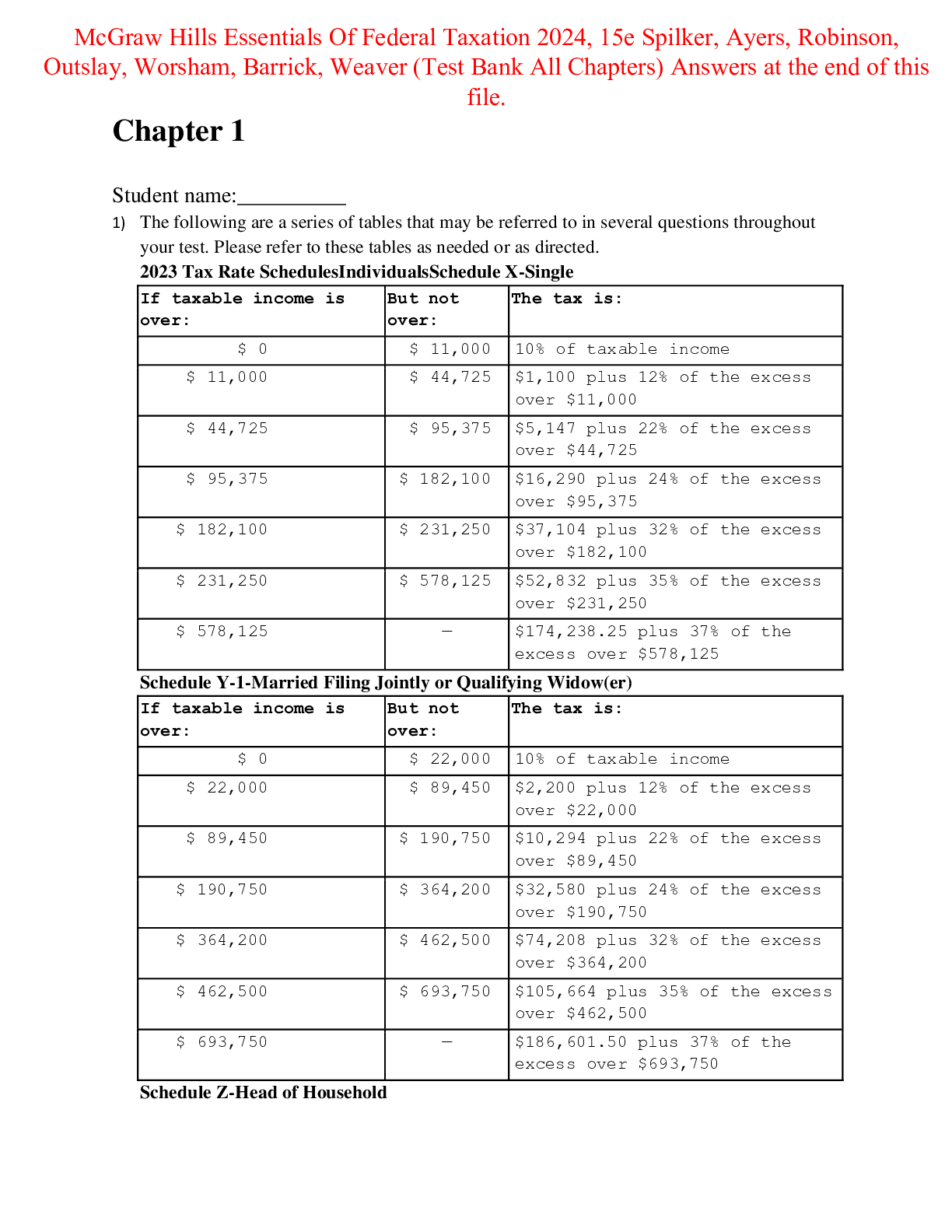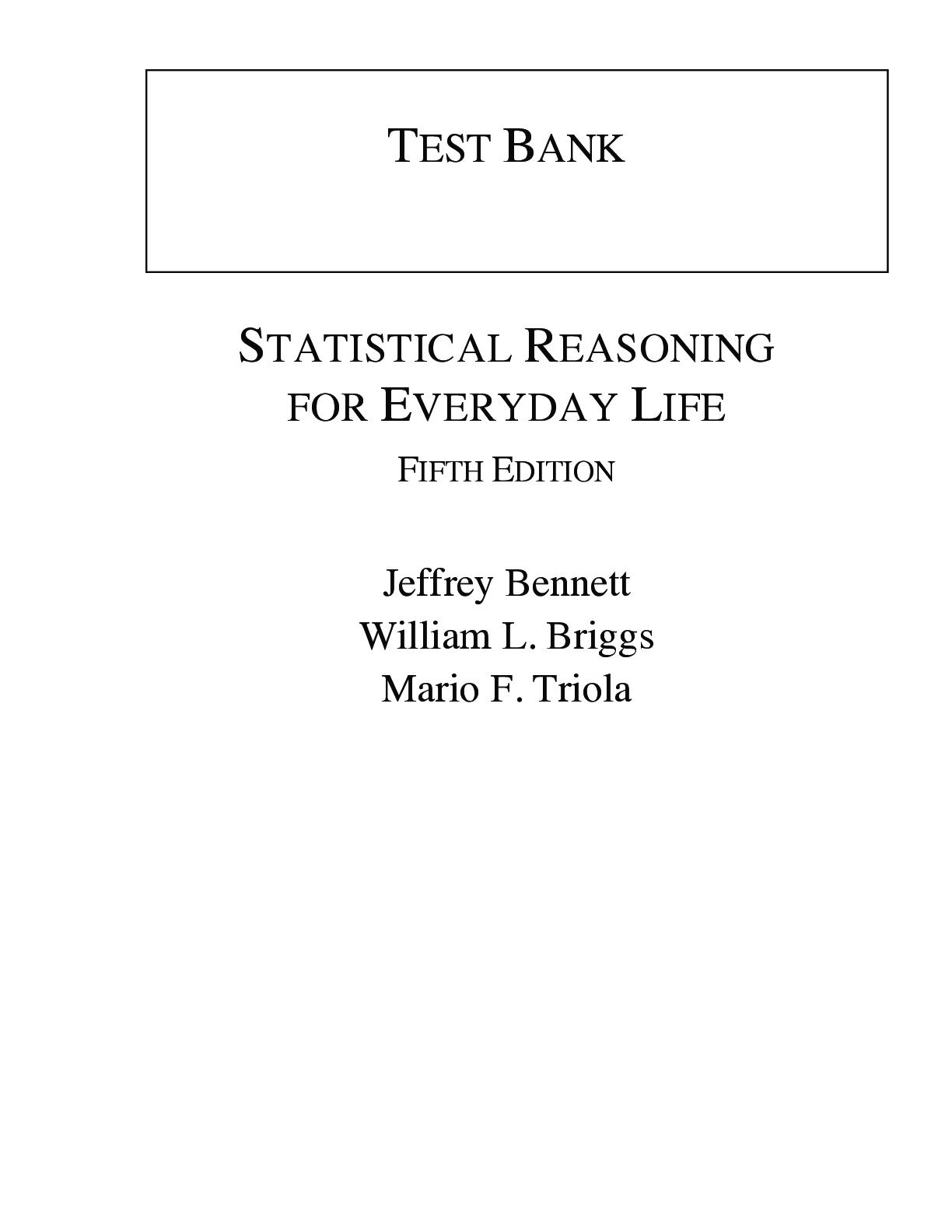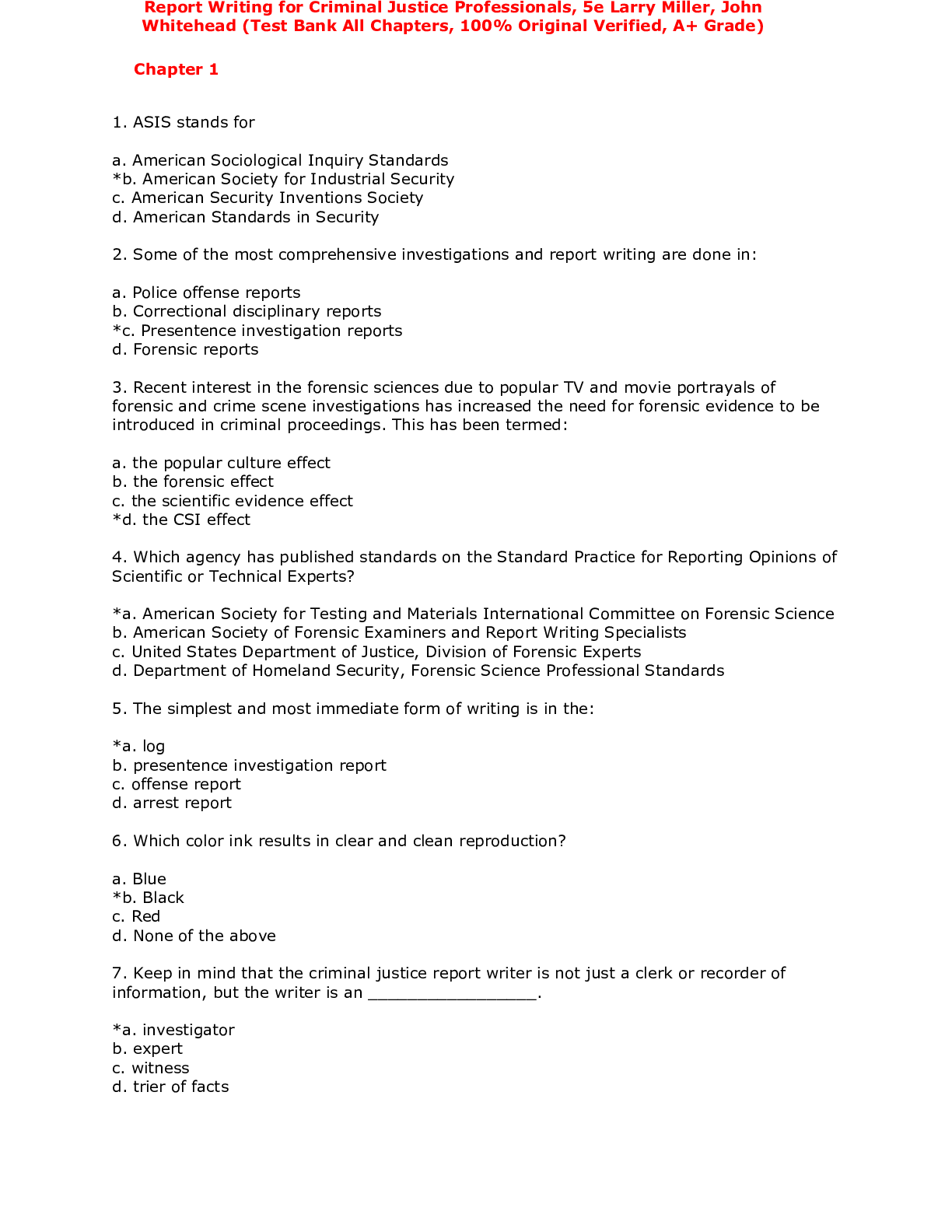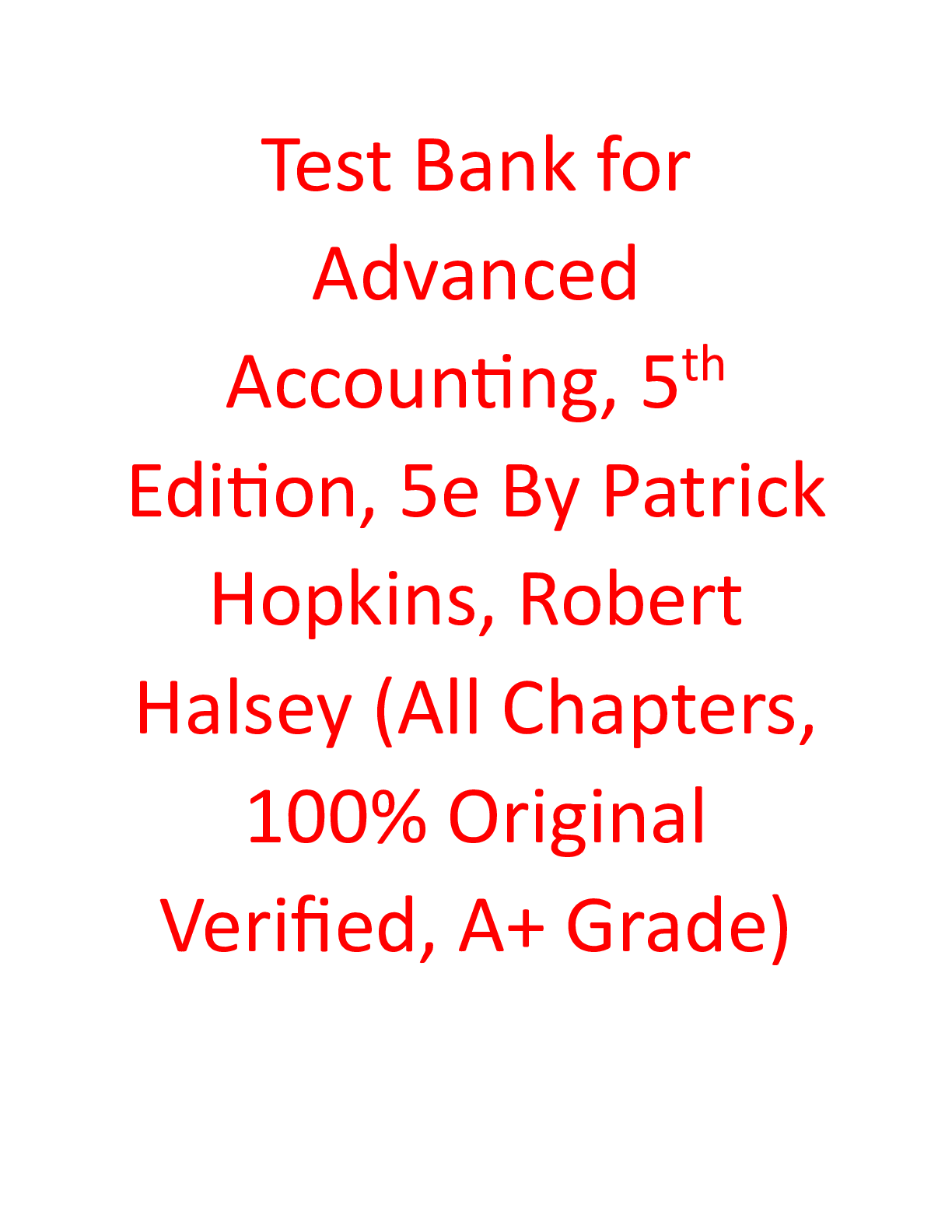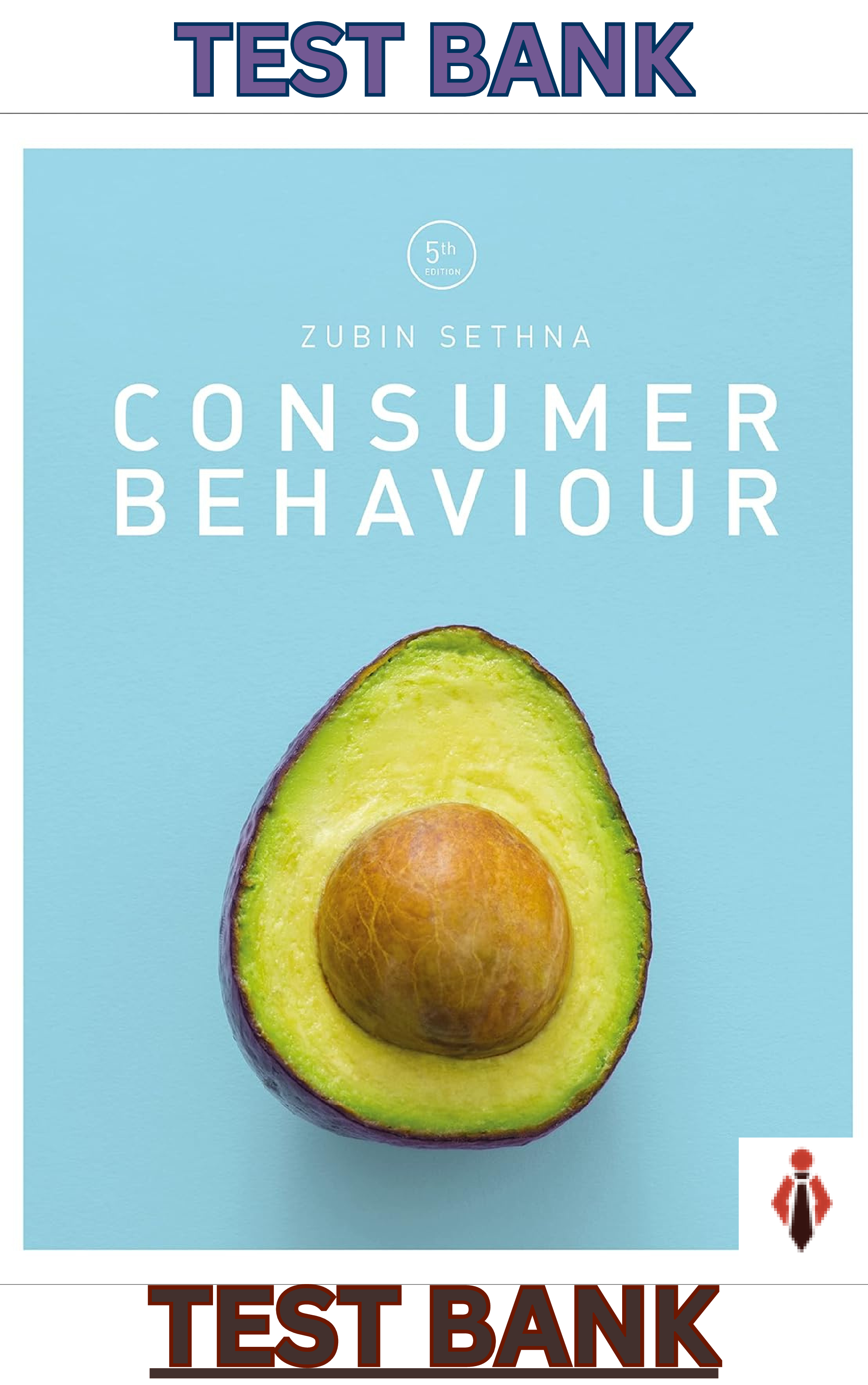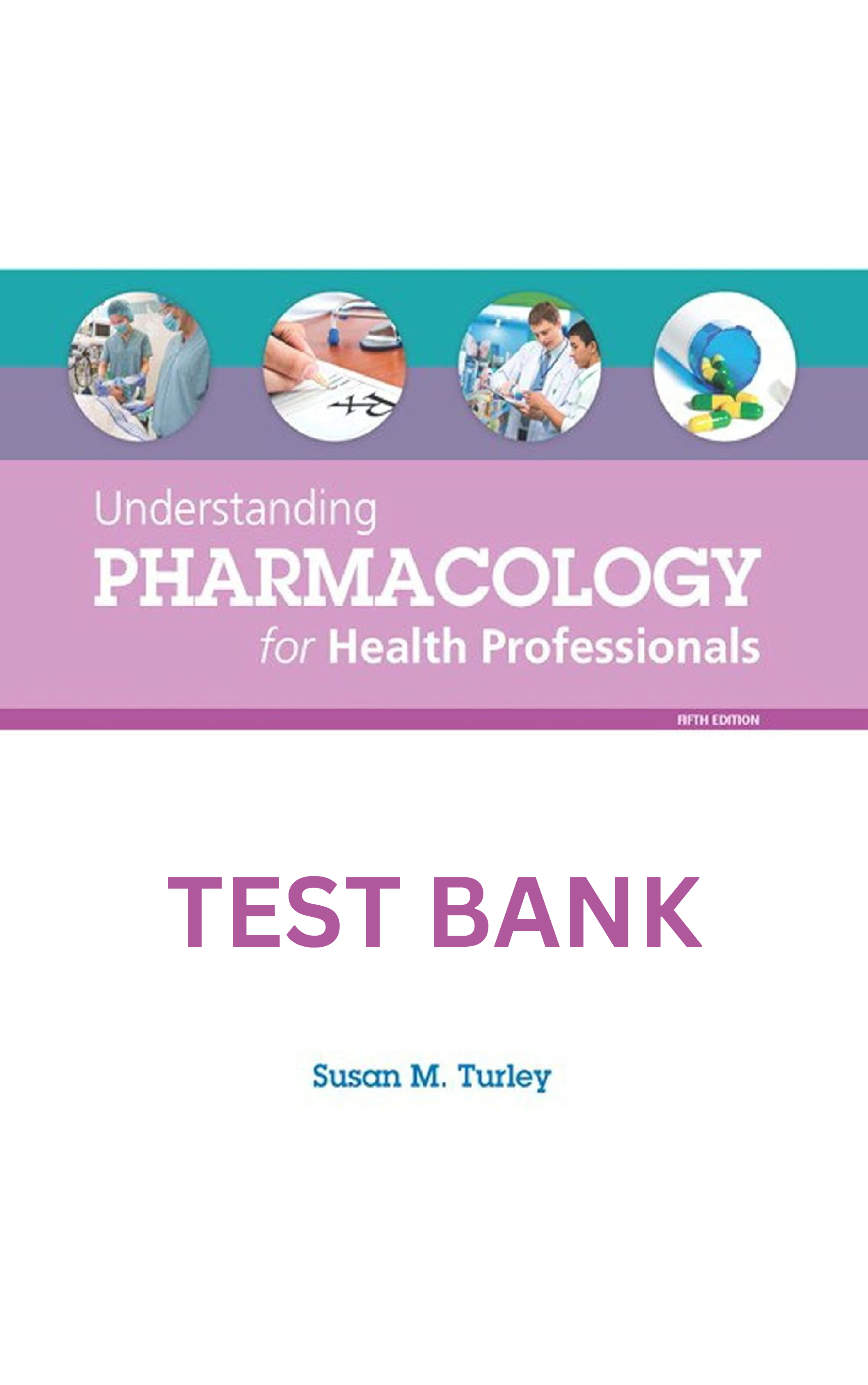Psychology > TEST BANK > Test Bank Clinical Psychology, Science, Practice, and Culture, 5th Edition by Pomerantz (All)
Test Bank Clinical Psychology, Science, Practice, and Culture, 5th Edition by Pomerantz
Document Content and Description Below
Test Bank for Clinical Psychology, Science, Practice, and Culture, 5th Edition, 5e by Andrew M. Pomerantz TEST BANK ISBN-13: 9781544333618 FULL CHAPTERS INCLUDED Chapter 1 • Clinical Psycholo... gy: Definition and Training What Is Clinical Psychology? Original Definition More Recent Definitions Education and Training in Clinical Psychology Balancing Practice and Science: The Scientist-Practitioner (Boulder) Model Leaning Toward Practice: The Practitioner-Scholar (Vail) Model ➡ Box 1.1: Comparing PhD Programs With PsyD Programs Leaning Toward Science: The Clinical Scientist Model Getting In: What Do Graduate Programs Prefer? ➡ Box 1.2: Interview Questions to Anticipate Internships: Predoc and Postdoc Getting Licensed Professional Activities and Employment Settings Where Do Clinical Psychologists Work? What Do Clinical Psychologists Do? How Are Clinical Psychologists Different From … Counseling Psychologists Psychiatrists ➡ Box 1.3: In My Practice … Social Workers School Psychologists Professional Counselors Marriage and Family Therapists Chapter Summary Key Terms and Names Critical Thinking Questions Looking Toward Graduate Programs Key Journals Student Study Site Resources Chapter 2 • Evolution of Clinical Psychology Origins of the Field Early Pioneers William Tuke (1732–1822) Philippe Pinel (1745–1826) Eli Todd (1769–1833) Dorothea Dix (1802–1887) Lightner Witmer and the Creation of Clinical Psychology Assessment Diagnostic Issues ➡ Box 2.1: Is It a DSM Disorder? Decisions to Include or Exclude Potential Disorders Assessment of Intelligence Assessment of Personality Psychotherapy ➡ Box 2.2: The Influence of War on Clinical Psychology Development of the Profession ➡ Box 2.3: Timeline of Key Historical Events in Clinical Psychology Chapter Summary Key Terms and Names Critical Thinking Questions Key Journals Student Study Site Resources Chapter 3 • Current Controversies and Directions in Clinical Psychology Prescription Privileges Why Clinical Psychologists Should Prescribe Why Clinical Psychologists Should Not Prescribe Evidence-Based Practice/Manualized Therapy ➡ Box 3.1: Metaphorically Speaking: Evidence-Based Treatment Manuals and Teaching Manuals Advantages of Evidence-Based Practice/Manualized Therapy Disadvantages of Evidence-Based Practice/Manualized Therapy Overexpansion of Mental Disorders New Disorders and New Definitions of Old Disorders ➡ Box 3.2: In My Practice … The Influence of the Pharmaceutical Industry Payment Methods: Third-Party Payment Versus Self-Payment Effect on Therapy Effect on Diagnosis The Influence of Technology: Telepsychology and More Applications of Technology in Clinical Psychology How Well Do Telepsychology and Other Applications of Technology Work? Emerging Professional Issues Chapter Summary Key Terms and Names Critical Thinking Questions Looking Toward Graduate Programs Key Journals Student Study Site Resources Chapter 4 • Diversity and Cultural Issues in Clinical Psychology The Rise of Multiculturalism in Clinical Psychology The Diversification of the U.S. Population Multiculturalism as the “Fourth Force” Recent Professional Efforts to Emphasize Issues of Diversity and Culture Cultural Competence What Is Cultural Competence? Cultural Self-Awareness ➡ Box 4.1: In My Practice … Knowledge of Diverse Cultures ➡ Box 4.2: Considering Culture: Interviews With Multicultural Experts: Cultural Competence With Clients From Specific Cultures ➡ Box 4.3: Metaphorically Speaking: If You’ve Seen Yao Ming, You Understand Heterogeneity Within a Culture Culturally Appropriate Clinical Skills Are We All Alike? Or All Different? Etic Versus Emic Perspective Tripartite Model of Personal Identity What Constitutes a Culture? Narrow Versus Broad Definitions Interacting Cultural Variables Training Psychologists in Issues of Diversity and Culture Educational Alternatives Measuring the Outcome of Culture-Based Training Efforts An Example of Culture Influencing the Clinical Context: The Parent–Child Relationship Chapter Summary Key Terms and Names Critical Thinking Questions Looking Toward Graduate Programs Key Journals Student Study Site Resources Chapter 5 • Ethical and Professional Issues in Clinical Psychology American Psychological Association’s Code of Ethics Aspirational and Enforceable Ethical Decision Making Psychologists’ Ethical Beliefs Confidentiality Tarasoff and the Duty to Warn When the Client Is a Child or Adolescent ➡ Box 5.1: In My Practice … ➡ Box 5.2: Considering Culture: Confidentiality, Ethnicity, and Family Informed Consent Boundaries and Multiple Relationships Defining Multiple Relationships What Makes Multiple Relationships Unethical? Competence Ethics in Clinical Assessment Ethics in Clinical Research Contemporary Ethical Issues Managed Care and Ethics Technology and Ethics Ethics in Small Communities ➡ Box 5.3: Metaphorically Speaking: If You’ve Played the “Six Degrees of Kevin Bacon” Game, You Understand Multiple Relationships in Small Communities Chapter Summary Key Terms and Names Critical Thinking Questions Key Journals Student Study Site Resources Chapter 6 • Conducting Research in Clinical Psychology Why Do Clinical Psychologists Do Research? Psychological Disorders Treatment Outcome ➡ Box 6.1: Measuring Therapy Outcome: Essential Questions ➡ Box 6.2: Considering Culture: Treatments That Work, but for Whom? Assessment Methods Diagnostic Issues Professional Issues Teaching and Training Issues How Do Clinical Psychologists Do Research? The Experimental Method Quasi-Experiments Between-Group Versus Within-Group Designs Analogue Designs Correlational Methods Case Studies Meta-Analysis ➡ Box 6.3: Metaphorically Speaking: If You Read Movie Reviews, You Understand Meta-Analysis Cross-Sectional Versus Longitudinal Designs Use of Technology in Clinical Psychology Research Ethical Issues in Research in Clinical Psychology ➡ Box 6.4: Key American Psychological Association Ethical Standards Related to Research in Clinical Psychology Chapter Summary Key Terms and Names Critical Thinking Questions Looking Toward Graduate Programs Key Journals Student Study Site Resources Part II • Assessment Chapter 7 • Diagnosis and Classification Issues: DSM-5 and More Defining Normality and Abnormality What Defines Abnormality? Who Defines Abnormality? ➡ Box 7.1: Considering Culture: Typical but Abnormal? Why Is the Definition of Abnormality Important? ➡ Box 7.2: In My Practice … Diagnosis and Classification of Mental Disorders: A Brief History Before the DSM DSM—Earlier Editions (I and II) DSM—More Recent Editions (III, III-R, IV, and IV-TR) DSM-5: The Current Edition Criticisms of the DSM ➡ Box 7.3: Considering Culture: Are Eating Disorders Culturally Specific? ➡ Box 7.4: Premenstrual Dysphoric Disorder Alternative Directions in Diagnosis and Classification ➡ Box 7.5: Metaphorically Speaking: If You’ve Eaten Chocolate Chip Cookies, You Understand the Dimensional Model of Psychopathology Chapter Summary Key Terms and Names Critical Thinking Questions Key Journals Student Study Site Resources Chapter 8 • The Clinical Interview The Interviewer General Skills Specific Behaviors Components of the Interview Rapport Technique ➡ Box 8.1: Considering Culture: Communication Across Cultures ➡ Box 8.2: Metaphorically Speaking: If You’ve Taken Multiple-Choice, True/False, and Essay Exams, You Understand Open- and Closed-Ended Interview Questions Conclusions Pragmatics of the Interview Note Taking Audio and Video Recordings ➡ Box 8.3 In My Practice … The Interview Room Confidentiality Types of Interviews Intake Interviews Diagnostic Interviews Mental Status Exam Crisis Interviews Cultural Components Appreciating the Cultural Context Acknowledging Cultural Differences ➡ Box 8.4: Interview Questions to Consider When Inquiring About the Cultural Backgrounds of Clients Chapter Summary Key Terms and Names Critical Thinking Questions Looking Toward Graduate Programs Key Journals Student Study Site Resources Chapter 9 • Intellectual and Neuropsychological Assessment Intelligence Testing Classic Theories of Intelligence More Contemporary Theories of Intelligence ➡ Box 9.1: Metaphorically Speaking: If You’ve Watched Multi-Sport Athletes, You Understand the Challenges of Defining and Assessing Intelligence Wechsler Intelligence Tests Stanford-Binet Intelligence Scales—Fifth Edition Additional Tests of Intelligence: Addressing Cultural Fairness Achievement Testing Achievement Versus Intelligence ➡ Box 9.2: Considering Culture: Defining Intelligence Around the World Wechsler Individual Achievement Test—Third Edition Neuropsychological Testing Full Neuropsychological Batteries Brief Neuropsychological Measures Chapter Summary Key Terms and Names Critical Thinking Questions Looking Toward Graduate Programs Key Journals Student Study Site Resources Chapter 10 • Personality Assessment and Behavioral Assessment Multimethod Assessment Evidence-Based Assessment Culturally Competent Assessment ➡ Box 10.1: Considering Culture: Culture-Specific Norms for Personality Tests Objective Personality Tests Minnesota Multiphasic Personality Inventory-2 ➡ Box 10.2: Simulated MMPI-2 Items ➡ Box 10.3: Metaphorically Speaking: If You’ve Shopped on Amazon.com, You Understand Empirical Criterion Keying Personality Assessment Inventory Millon Clinical Multiaxial Inventory-IV NEO Personality Inventory-3 Beck Depression Inventory-II Projective Personality Tests Rorschach Inkblot Method ➡ Box 10.4: Simulated TAT Card With Simulated Responses Thematic Apperception Test Sentence Completion Tests Behavioral Assessment Methods of Behavioral Assessment Technology in Behavioral Assessment Chapter Summary Key Terms and Names Critical Thinking Questions Key Journals Student Study Site Resources Part III • Psychotherapy Chapter 11 • General Issues in Psychotherapy Does Psychotherapy Work? Whom, When, and How Should Researchers Ask? Efficacy Versus Effectiveness of Psychotherapy ➡ Box 11.1: Considering Culture: Culture-Specific Expectations About Psychotherapy Results of Efficacy Studies Bridging the Gap Between Research and Practice Results of Effectiveness Studies Alternate Ways to Measure Psychotherapy Outcome Which Type of Psychotherapy Is Best? The “Dodo Bird Verdict” and Common Factors Therapeutic Relationship/Alliance Other Common Factors ➡ Box 11.2: Metaphorically Speaking: If You Use Toothpaste, You Understand Common Factors in Psychotherapy Reconsidering the Dodo Bird Verdict: Specific Treatments for Specific Disorders ➡ Box 11.3: In My Practice … What Types of Psychotherapy Do Clinical Psychologists Practice? The Past and Present ➡ Box 11.4: Considering Culture: Are Evidence-Based Treatments Appropriate for Diverse Clients? The Future Eclectic and Integrative Approaches ➡ Box 11.5: Metaphorically Speaking: If You Know the Difference Between a Fruit Salad and a Smoothie, You Understand the Difference Between Eclectic and Integrative Psychotherapists Denise: A Fictional Client to Consider From Multiple Perspectives ➡ Box 11.6: Denise: A Fictional Client to Consider From Multiple Perspectives Chapter Summary Key Terms and Names Critical Thinking Questions Looking Toward Graduate Programs Key Journals Student Study Site Resources Chapter 12 • Psychodynamic Psychotherapy Defining Psychodynamic Psychotherapy Goal of Psychodynamic Psychotherapy Accessing the Unconscious ➡ Box 12.1: Metaphorically Speaking: If You’ve Been to a Movie Theater, You Understand Projection ➡ Box 12.2: In My Practice … ➡ Box 12.3: Considering Culture: Culture-Specific Responses to the “Blank Screen” Therapist Psychosexual Stages: Clinical Implications Oral Stage Anal Stage Phallic Stage More Contemporary Forms of Psychodynamic Psychotherapy Interpersonal Therapy Time-Limited Dynamic Psychotherapy How Well Does It Work? ➡ Box 12.4: Metaphorically Speaking: If You’ve Watched the Olympics, You Understand Allegiance Effects ➡ Box 12.5: Denise in Psychodynamic Psychotherapy Chapter Summary Key Terms and Names Critical Thinking Questions Looking Toward Graduate Programs Key Journals Student Study Site Resources Chapter 13 • Humanistic Psychotherapy Humanistic Concepts: Clinical Implications Goal of Humanistic Psychotherapy Elements of Humanistic Psychotherapy Empathy Unconditional Positive Regard ➡ Box 13.1: Considering Culture: Empathy Across Cultures Genuineness Necessary and Sufficient? ➡ Box 13.2: In My Practice … Therapist Attitudes, Not Behaviors Reflection: An Important Therapist Response ➡ Box 13.3: Metaphorically Speaking: If You’ve Looked in a Magnifying Mirror, You Understand Reflection Alternatives to Humanism Historical Alternatives Motivational Interviewing Positive Interventions and Strength-Based Counseling Emotionally Focused Therapy Other Contemporary Alternatives How Well Does It Work? ➡ Box 13.4: Denise in Humanistic Psychotherapy Chapter Summary Key Terms and Names Critical Thinking Questions Looking Toward Graduate Programs Key Journals Student Study Site Resources Chapter 14 • Behavior Therapy Origins of Behavior Therapy Goal of Behavior Therapy Emphasis on Empiricism Defining Problems Behaviorally Measuring Change Observably Two Types of Conditioning Classical Conditioning Operant Conditioning Techniques Based on Classical Conditioning Exposure Therapy Systematic Desensitization Assertiveness Training ➡ Box 14.1: Considering Culture: Assertiveness Training and Collectivist Values Techniques Based on Operant Conditioning Contingency Management ➡ Box 14.2: In My Practice … Extinction ➡ Box 14.3: Metaphorically Speaking: If You’ve Lost Money in a Soda Machine, You Understand Extinction and the Extinction Burst Token Economies Shaping Behavioral Activation Observational Learning (Modeling) Alternatives to Behavior Therapy Behavioral Consultation Parent Training Teacher Training ➡ Box 14.4: Denise in Behavior Therapy How Well Does It Work? Chapter Summary Key Terms and Names Critical Thinking Questions Looking Toward Graduate Programs Key Journals Student Study Site Resources Chapter 15 • Cognitive Psychotherapy and Mindfulness-Based Therapies Goal of Cognitive Therapy The Importance of Cognition Revising Cognitions Teaching as a Therapy Tool Homework ➡ Box 15.1: Considering Culture: Cognitive Therapy With LGBTQ A Brief, Structured, Focused Approach Two Approaches to Cognitive Therapy Albert Ellis ➡ Box 15.2: Considering Culture: Are Some Beliefs Too Sacred to Dispute? Aaron Beck ➡ Box 15.3: In My Practice … Recent Applications of Cognitive Therapy ➡ Box 15.4: Metaphorically Speaking: If You’ve Seen Attorneys Argue in Court, You Understand How Cognitive Therapists Dispute Thought Distortions The Third Wave: Mindfulness- and Acceptance-Based Therapies Cognitive Therapy for Medical Problems Schema Therapy How Well Does It Work? ➡ Box 15.5: Denise in Cognitive Psychotherapy Chapter Summary Key Terms and Names Critical Thinking Questions Looking Toward Graduate Programs Key Journals Student Study Site Resources Chapter 16 • Group and Family Therapy Group Therapy An Interpersonal Emphasis Practical Issues in Group Therapy Ethical Issues in Group Therapy How Well Does It Work? ➡ Box 16.1: Denise in Group Therapy Family Therapy The System as the Problem Assessment of Families ➡ Box 16.2: In My Practice … Family Therapy: Essential Concepts ➡ Box 16.3: Considering Culture: Gender, Abuse, and Family Therapy ➡ Box 16.4: Metaphorically Speaking: If You’ve Been to a Car Repair Shop, You Understand Systems Theory Ethical Issues in Family Therapy How Well Does It Work? Chapter Summary Key Terms and Names Critical Thinking Questions Looking Toward Graduate Programs Key Journals Student Study Site Resources Part IV • Special Topics Chapter 17 • Clinical Child and Adolescent Psychology Psychological Issues of Childhood Disorders of Childhood Resilience and Vulnerability ➡ Box 17.1: Factors Fostering Resilience in Children Assessment of Children and Adolescents The Developmental Perspective ➡ Box 17.2: Considering Culture: Parent–Child Relationships Across Cultures A Comprehensive Assessment ➡ Box 17.3: In My Practice … Assessment Methods The Frequency of Use of Specific Assessment Techniques Psychotherapy With Children and Adolescents Cognitive-Behavioral Therapies for Children Self-Instructional Training ➡ Box 17.4: Metaphorically Speaking: If You’ve Had Dancing Lessons, You Understand Self-Instructional Training Parent Training Play Therapy How Well Does Psychotherapy for Children and Adolescents Work? Chapter Summary Key Terms and Names Critical Thinking Questions Looking Toward Graduate Programs Key Journals Student Study Site Resources Chapter 18 • Health Psychology Definitions: Health Psychology Versus Behavioral Medicine Stress Stress and Physical Illness Stress and Coping ➡ Box 18.1: Considering Culture: Physical and Psychological Expressions of Depression Across Cultures Social Support Clinical Applications Weight Management Smoking Alcohol Use Pain Management and Biofeedback ➡ Box 18.2: Metaphorically Speaking: If You’ve Used Exercise Equipment With a Heart Rate Monitor, You Understand Biofeedback ➡ Box 18.3: Sample of an Abbreviated Progressive Relaxation Training Script Compliance With Medical Regimens Coping With Medical Procedures A Trend in Health Psychology: Patient-Centered Medical Homes Cultural Factors in Health Psychology Chapter Summary Key Terms and Names Critical Thinking Questions Looking Toward Graduate Programs Key Journals Student Study Site Resources Chapter 19 • Forensic Psychology Definition and History Forensic Activities of Clinical Psychologists Assessment Activities ➡ Box 19.1: Metaphorically Speaking: If You’ve Bought Car Insurance, You Understand Clinical and Statistical Methods of Predicting Dangerousness Treatment and Other Forensic Activities ➡ Box 19.2: Considering Culture: Cultural Competence in Forensic Clinical Psychology Chapter Summary Key Terms and Names Critical Thinking Questions Looking Toward Graduate Programs [Show More]
Last updated: 11 months ago
Preview 1 out of 228 pages
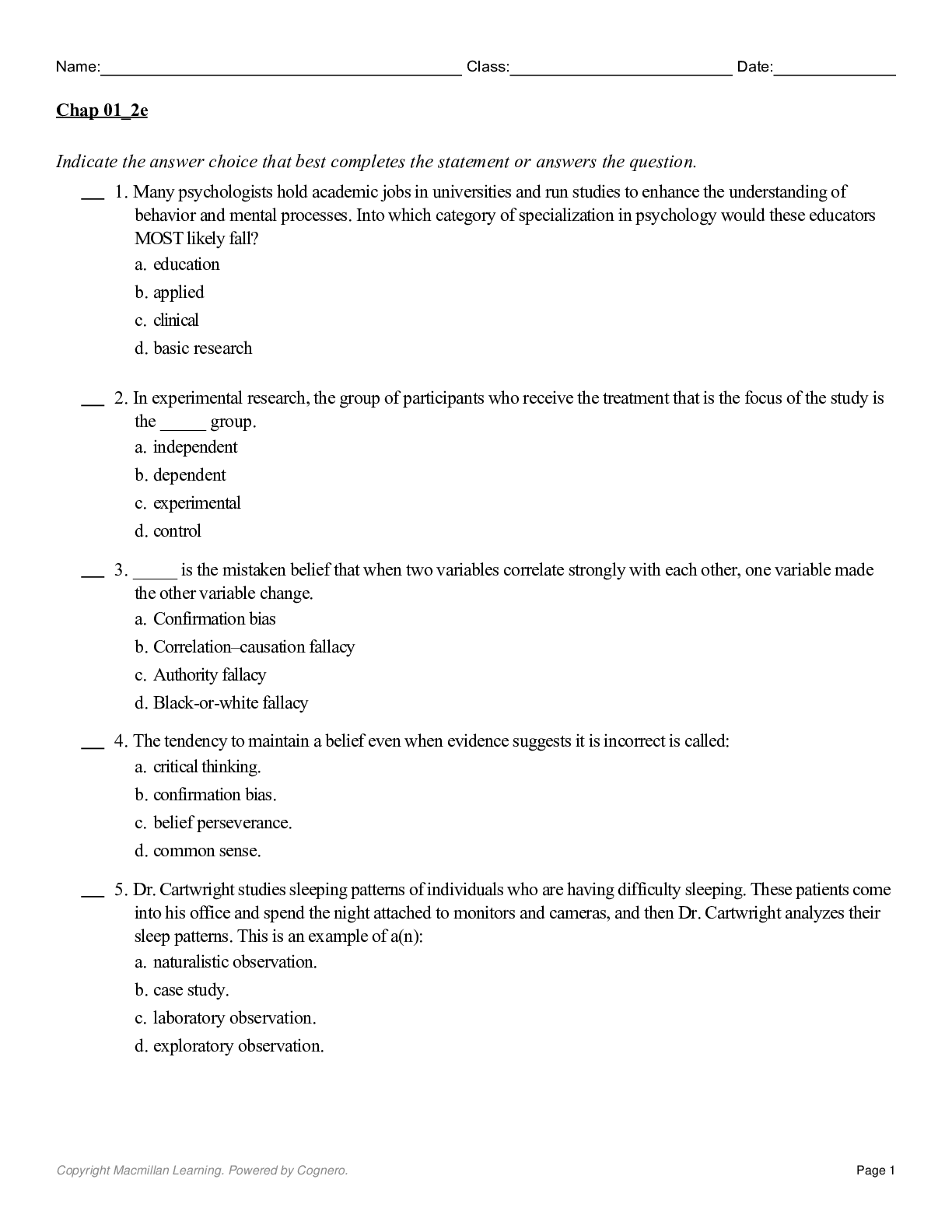
Reviews( 0 )
Document information
Connected school, study & course
About the document
Uploaded On
Dec 26, 2022
Number of pages
228
Written in
Additional information
This document has been written for:
Uploaded
Dec 26, 2022
Downloads
0
Views
112

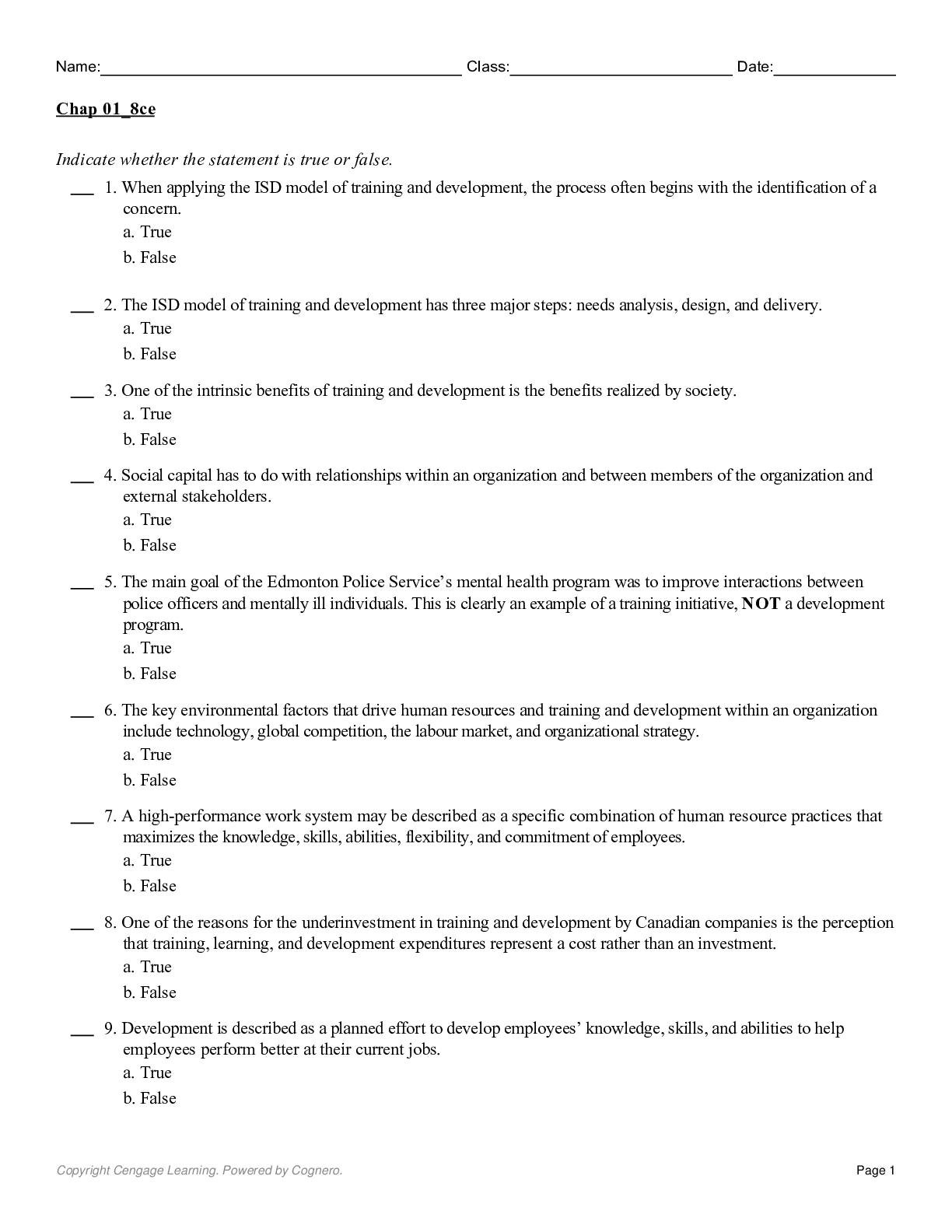
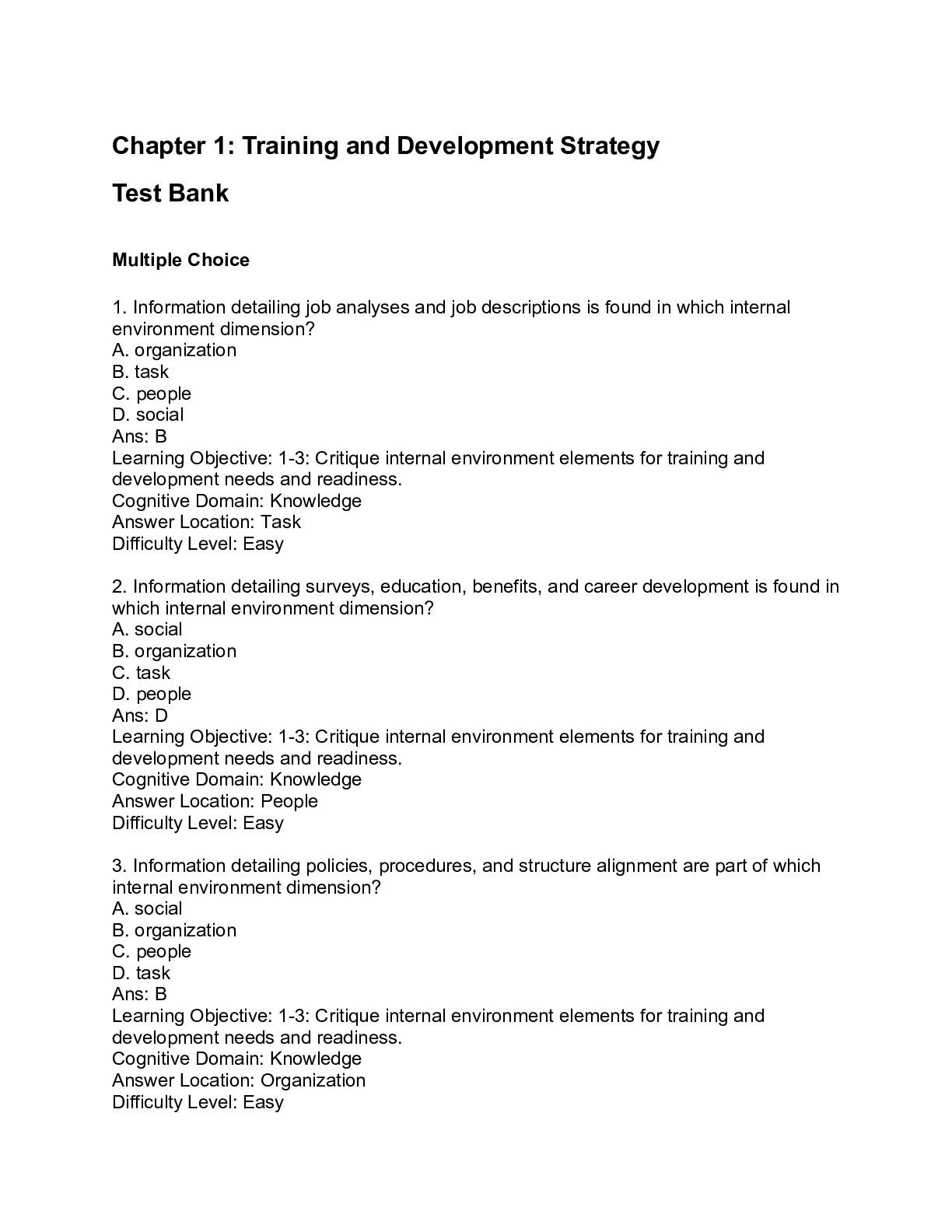
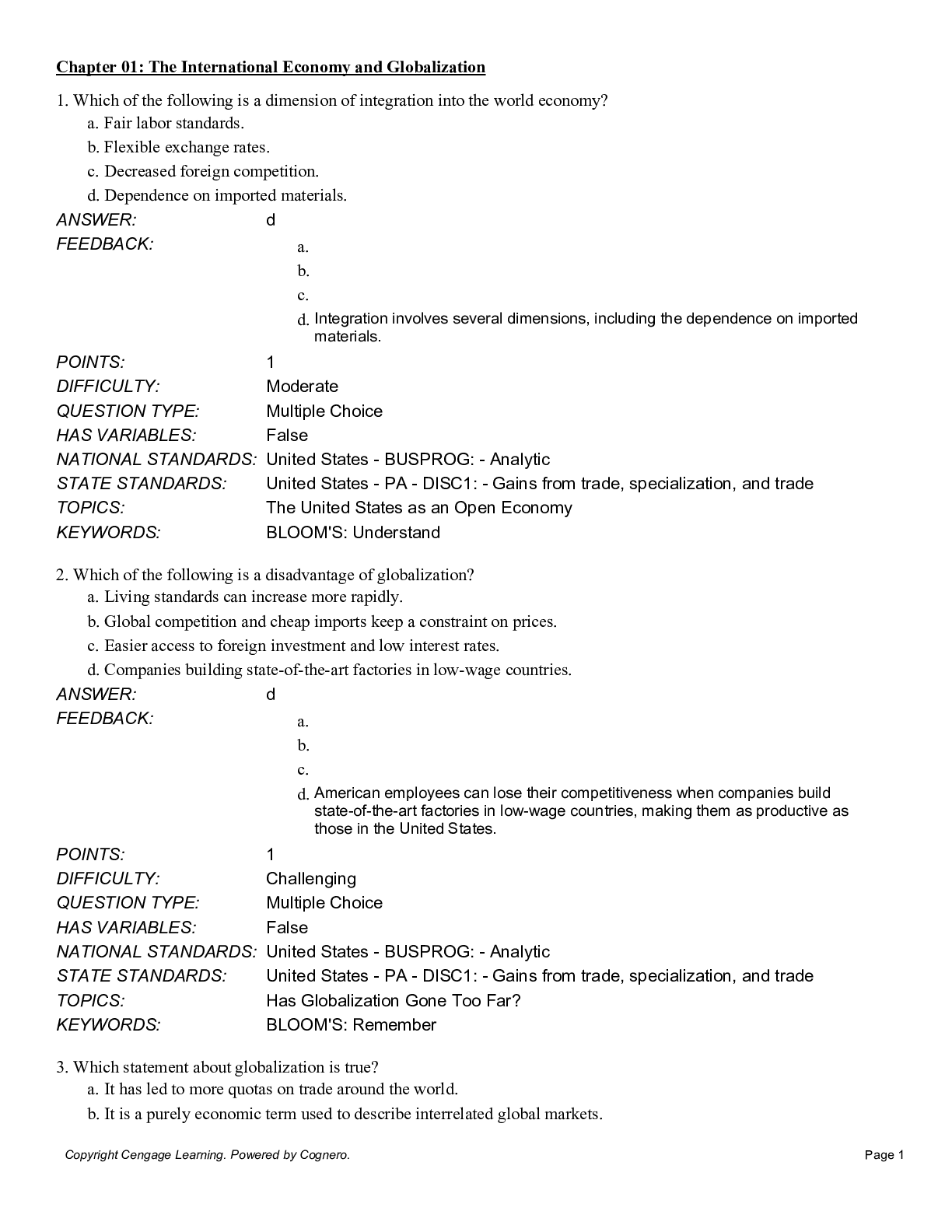
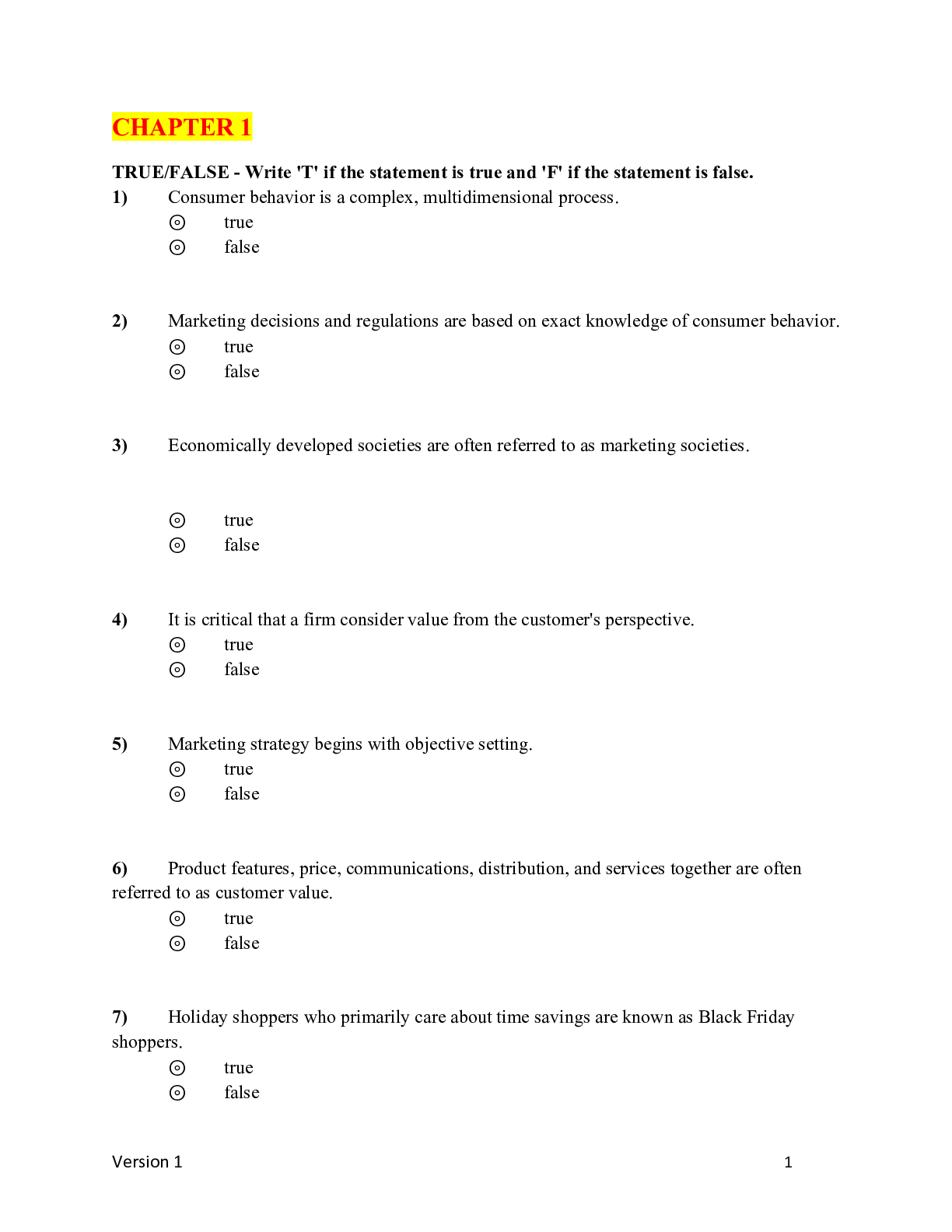
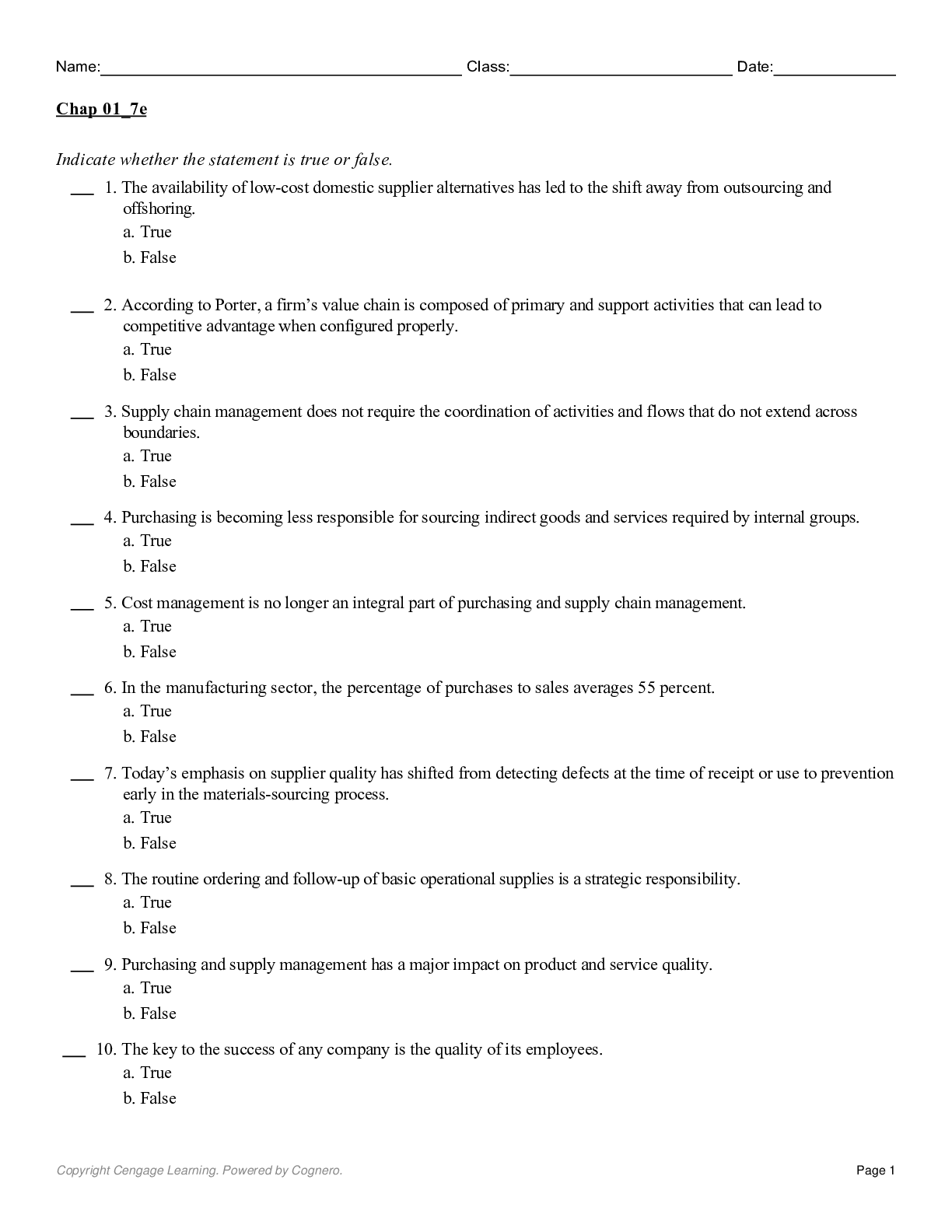
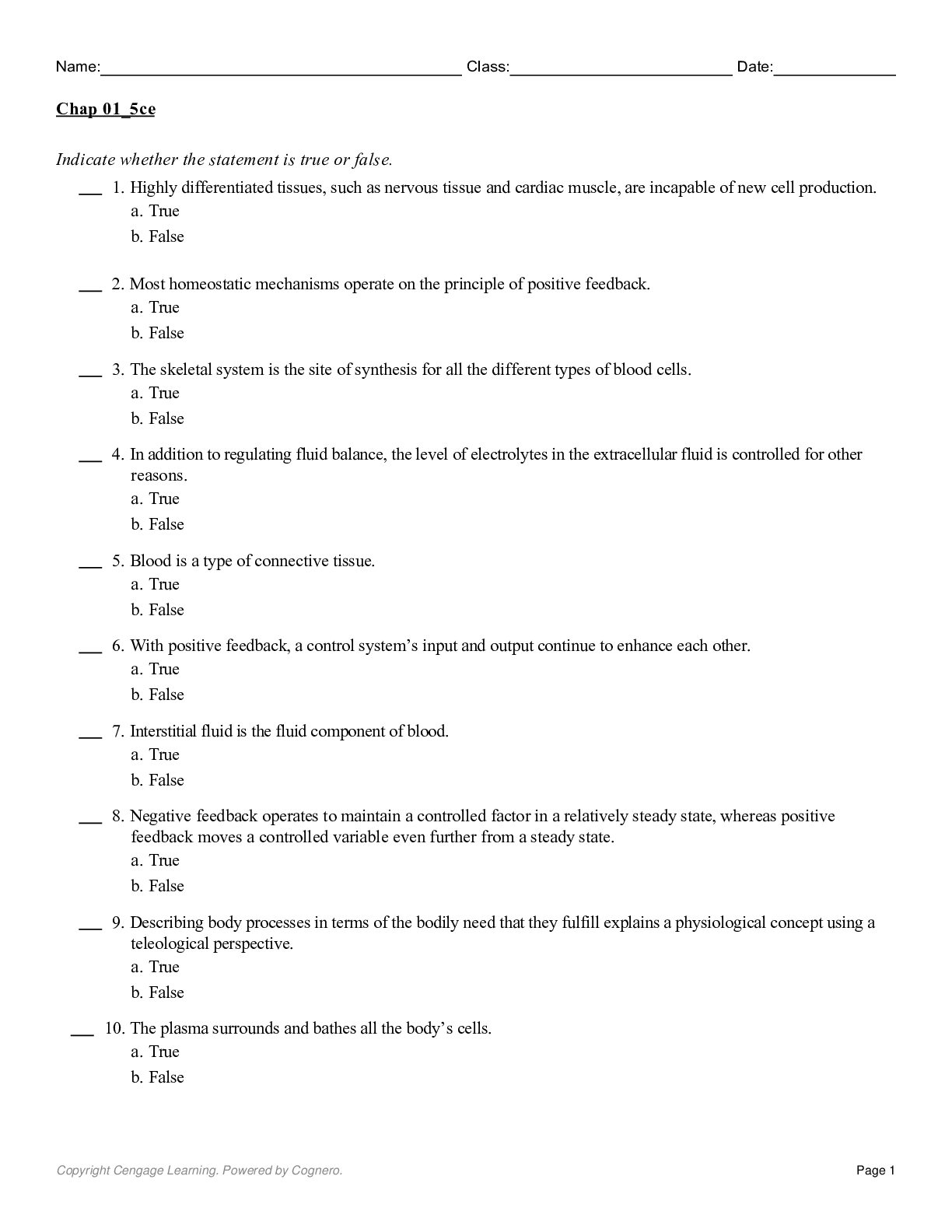

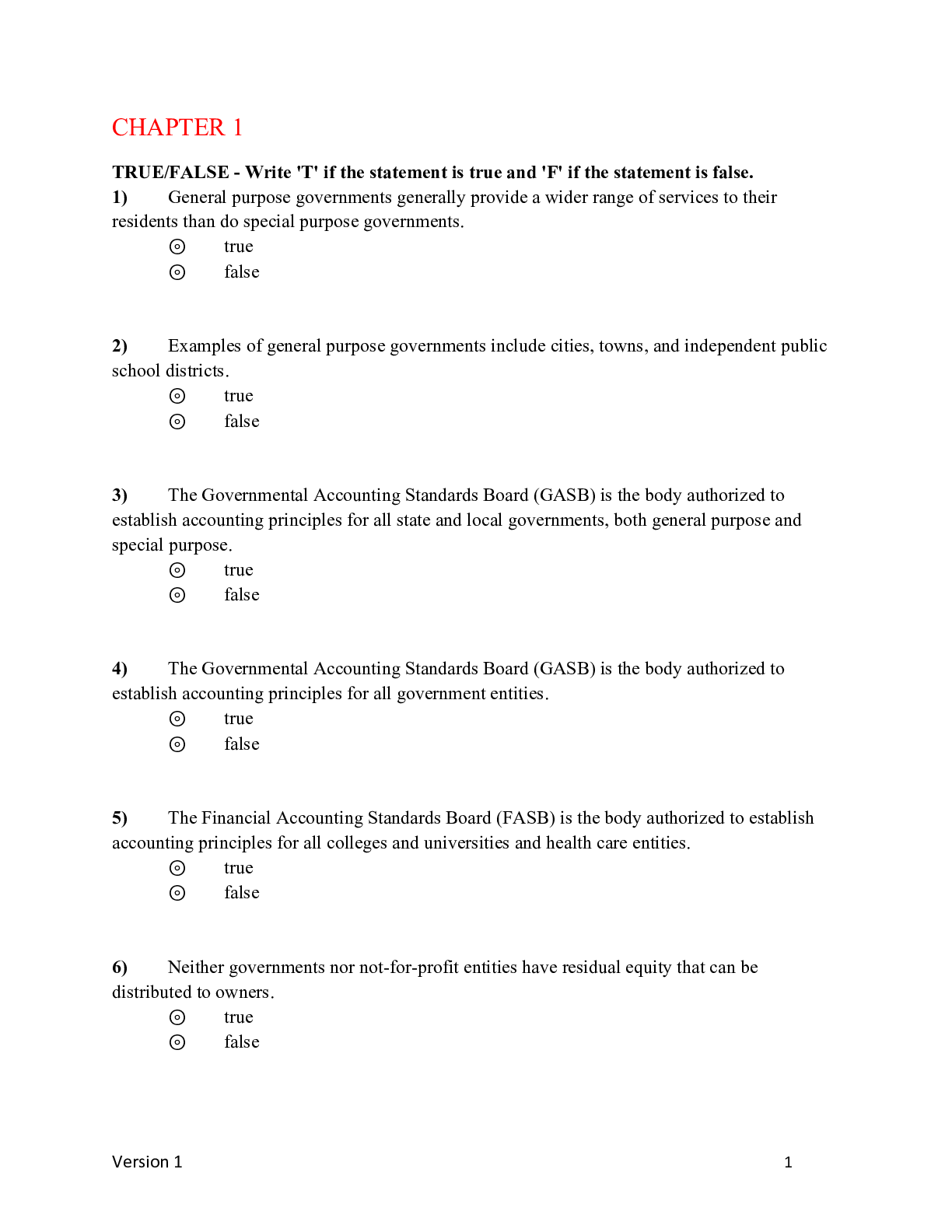
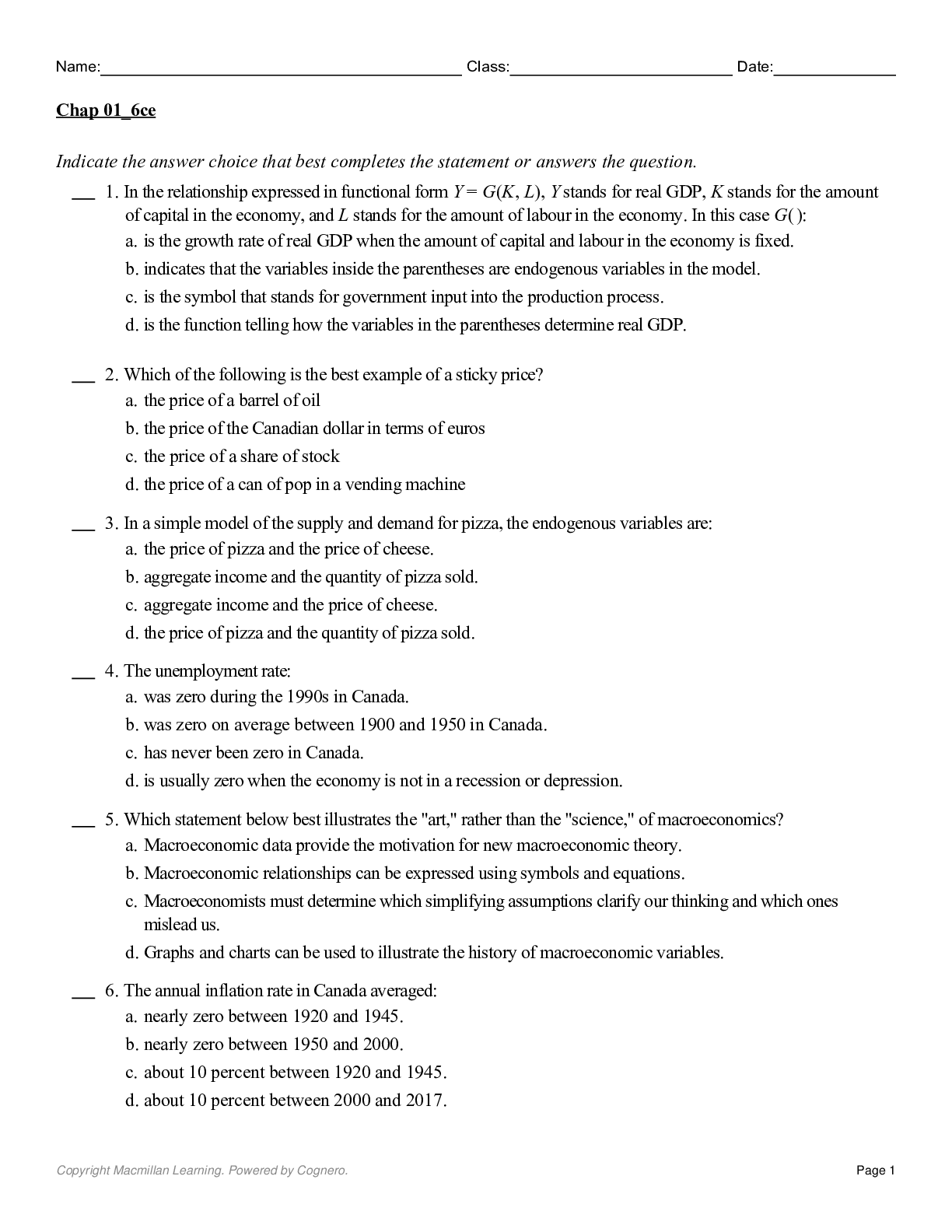
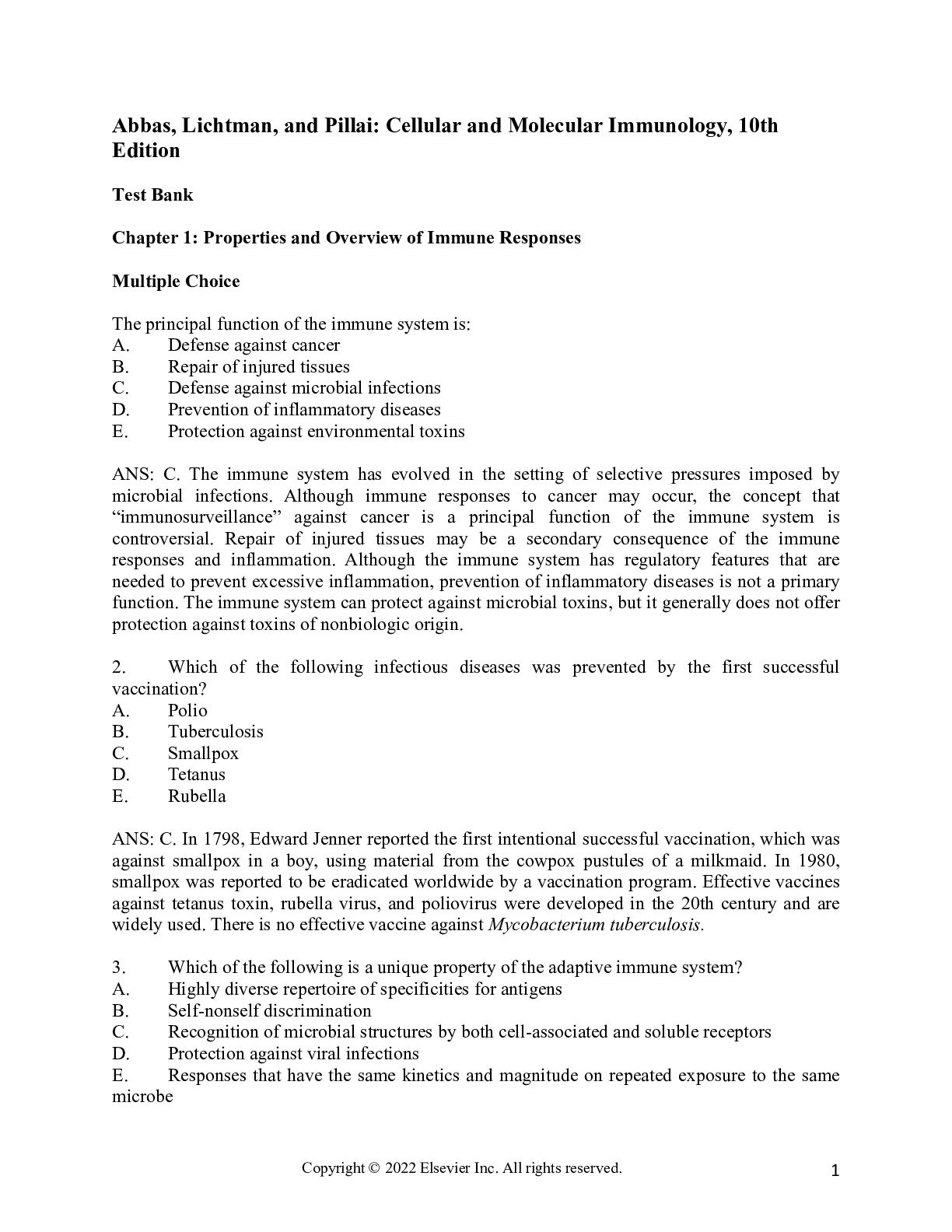

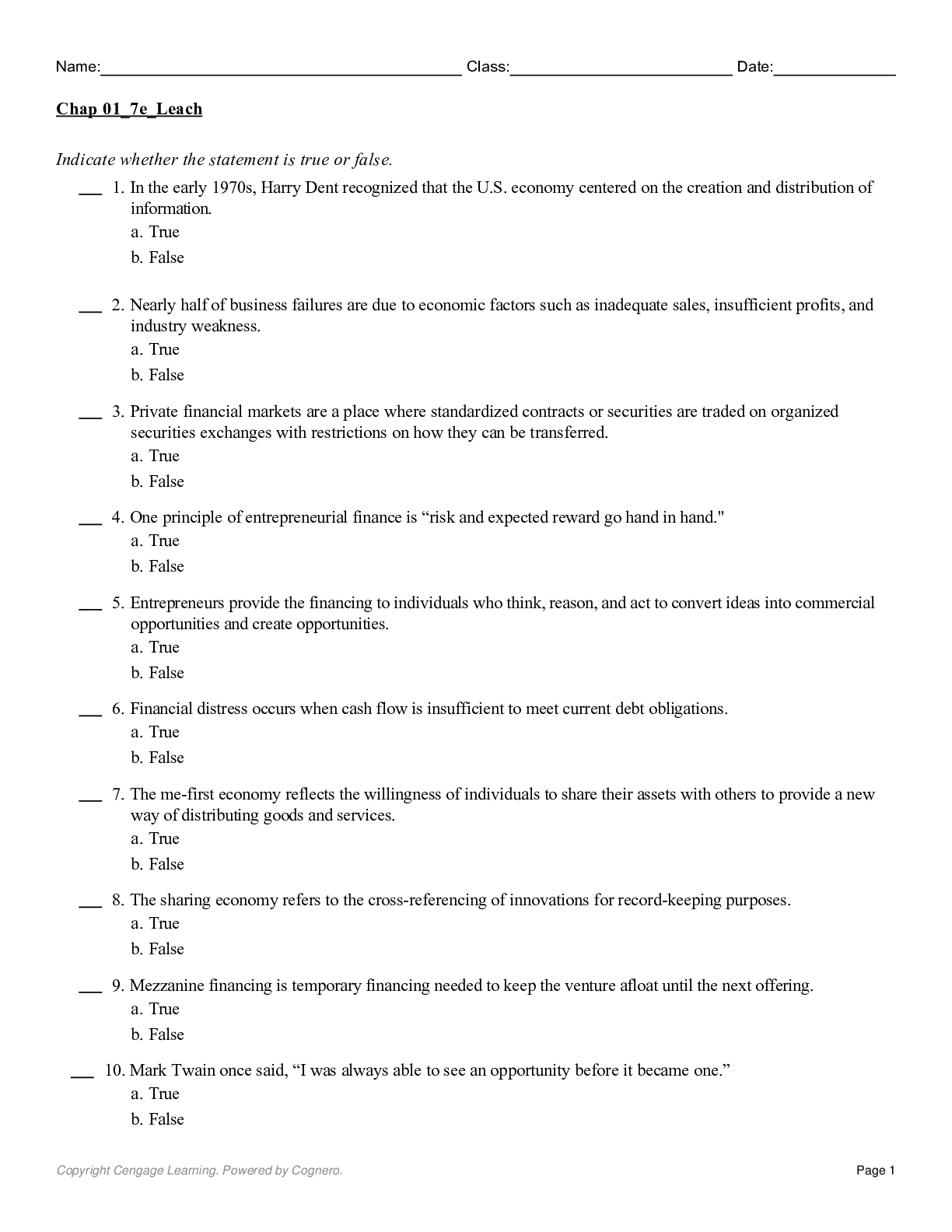
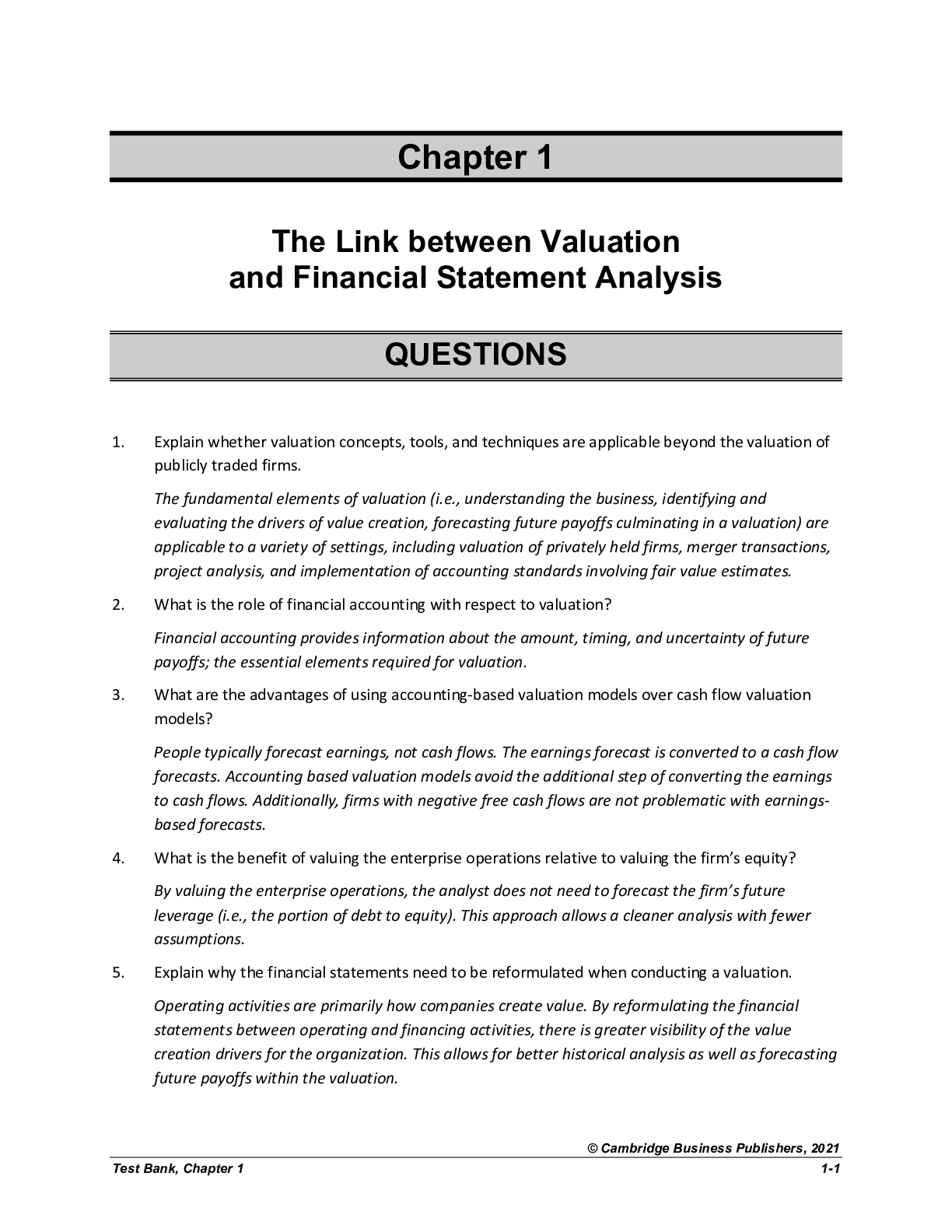
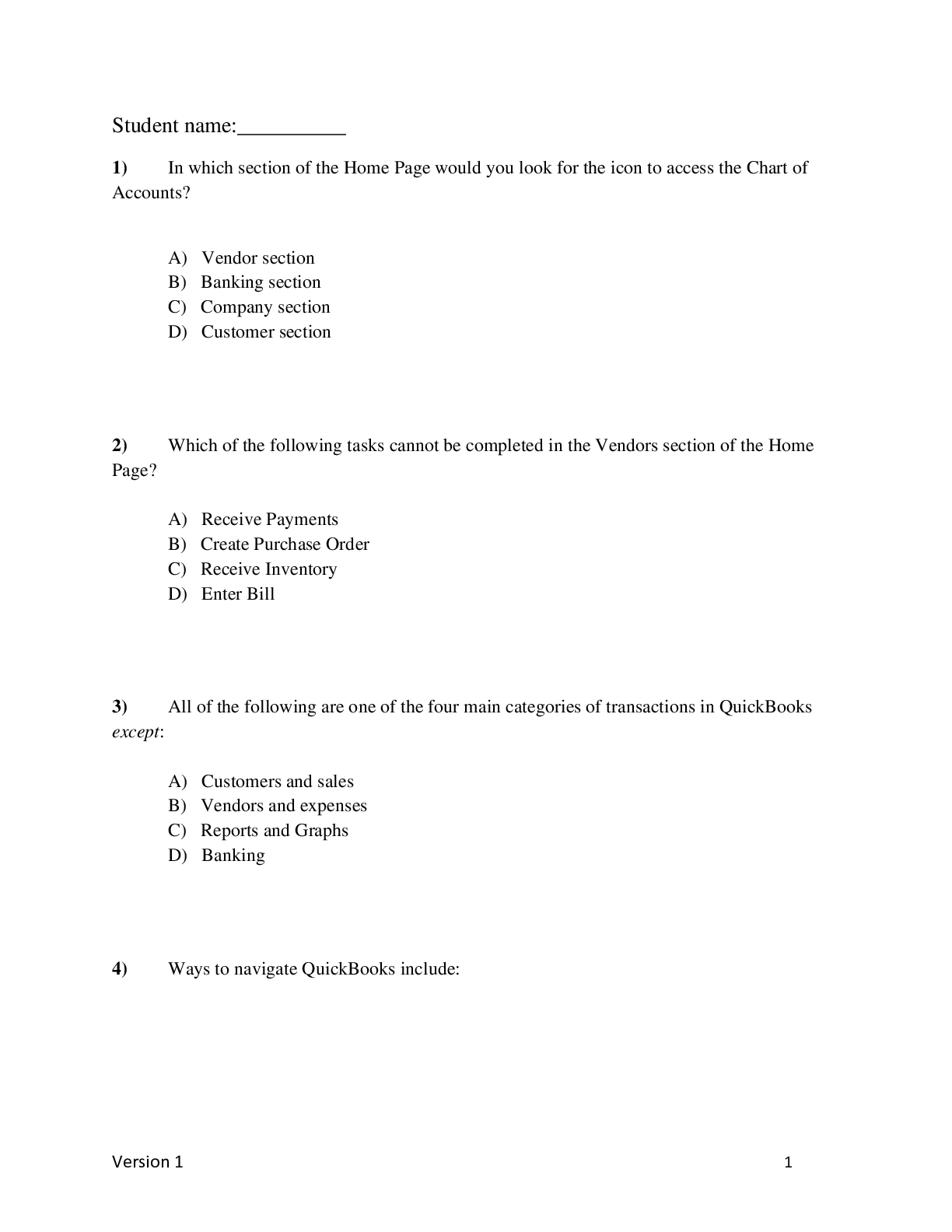
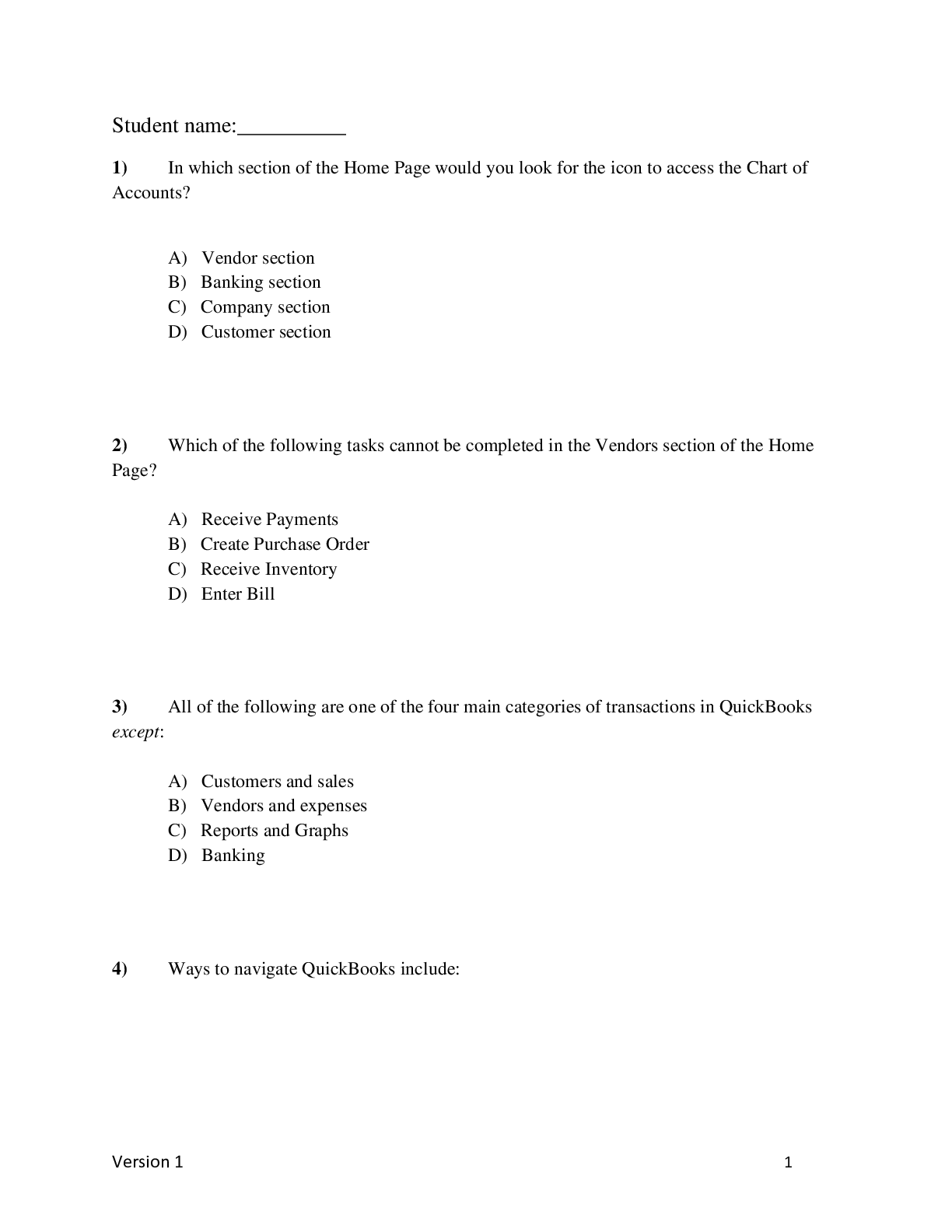
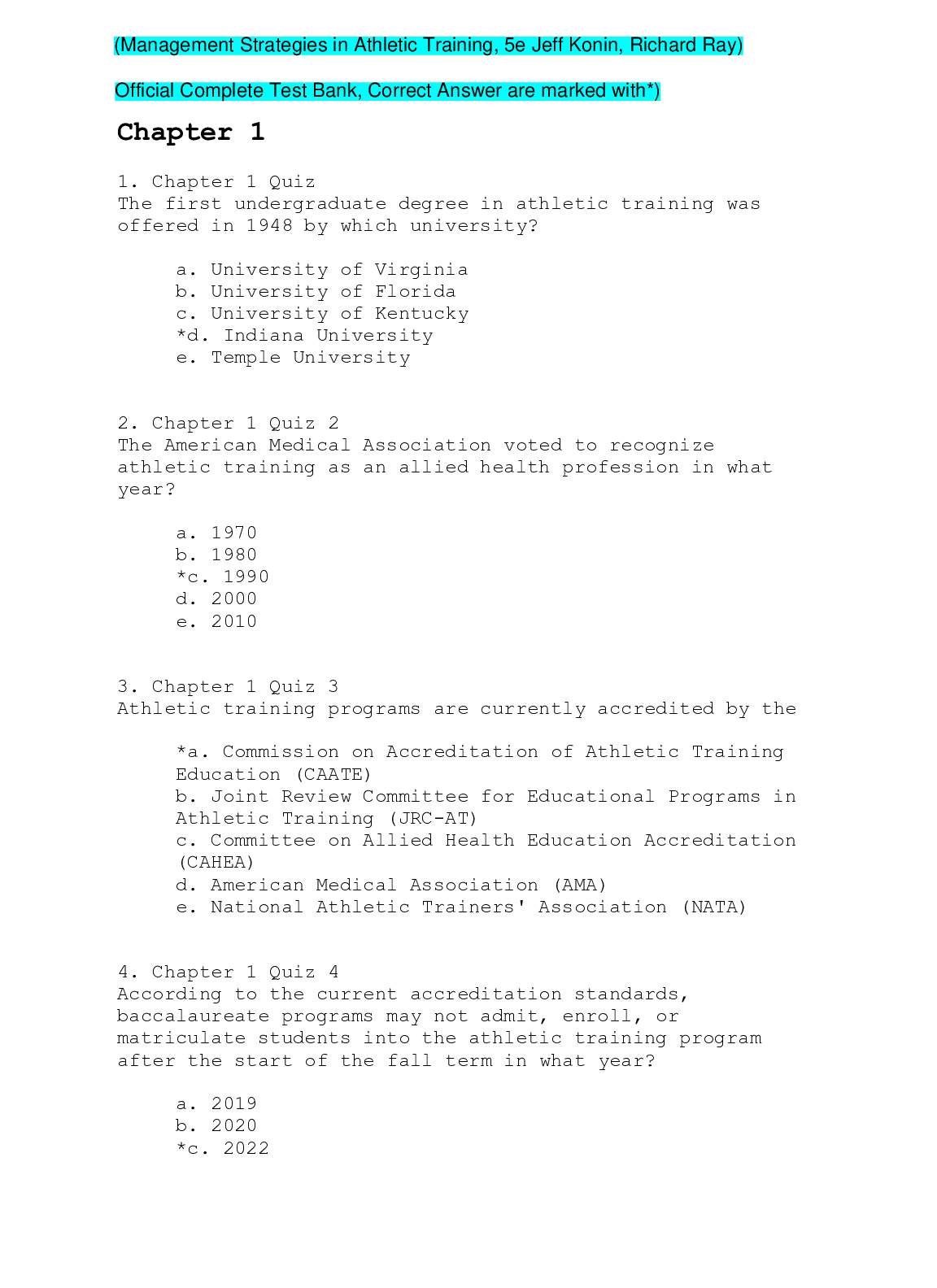

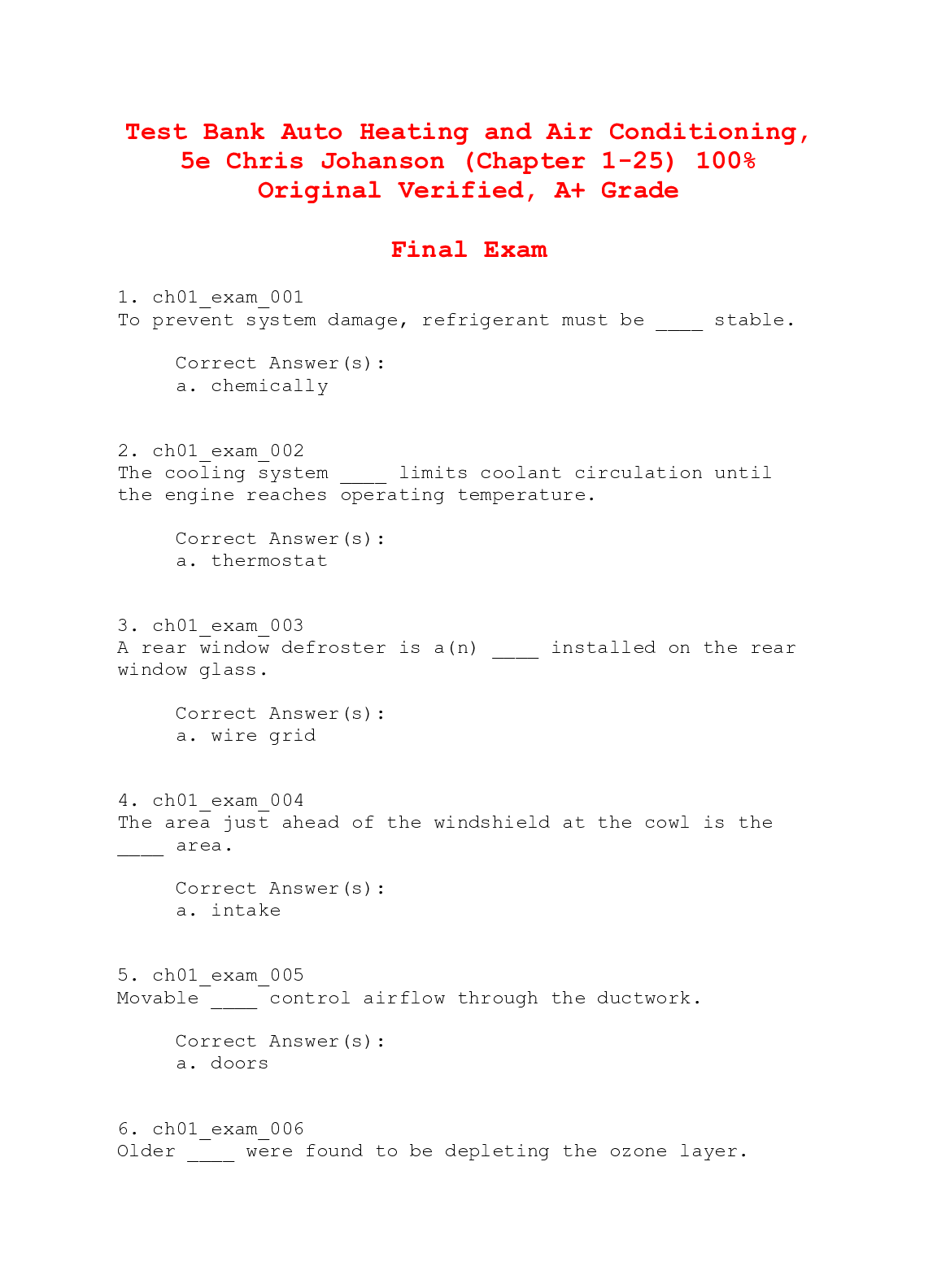
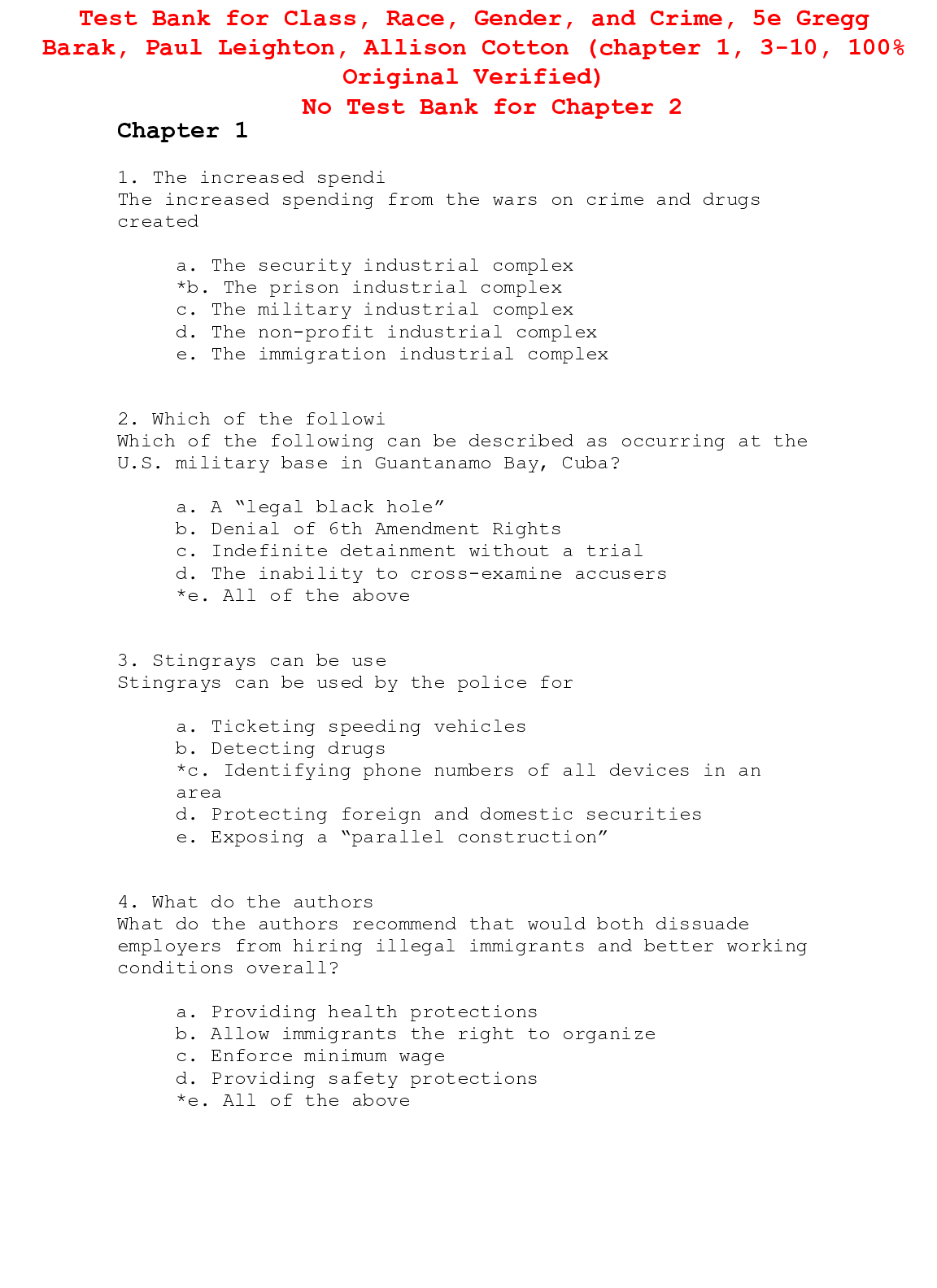
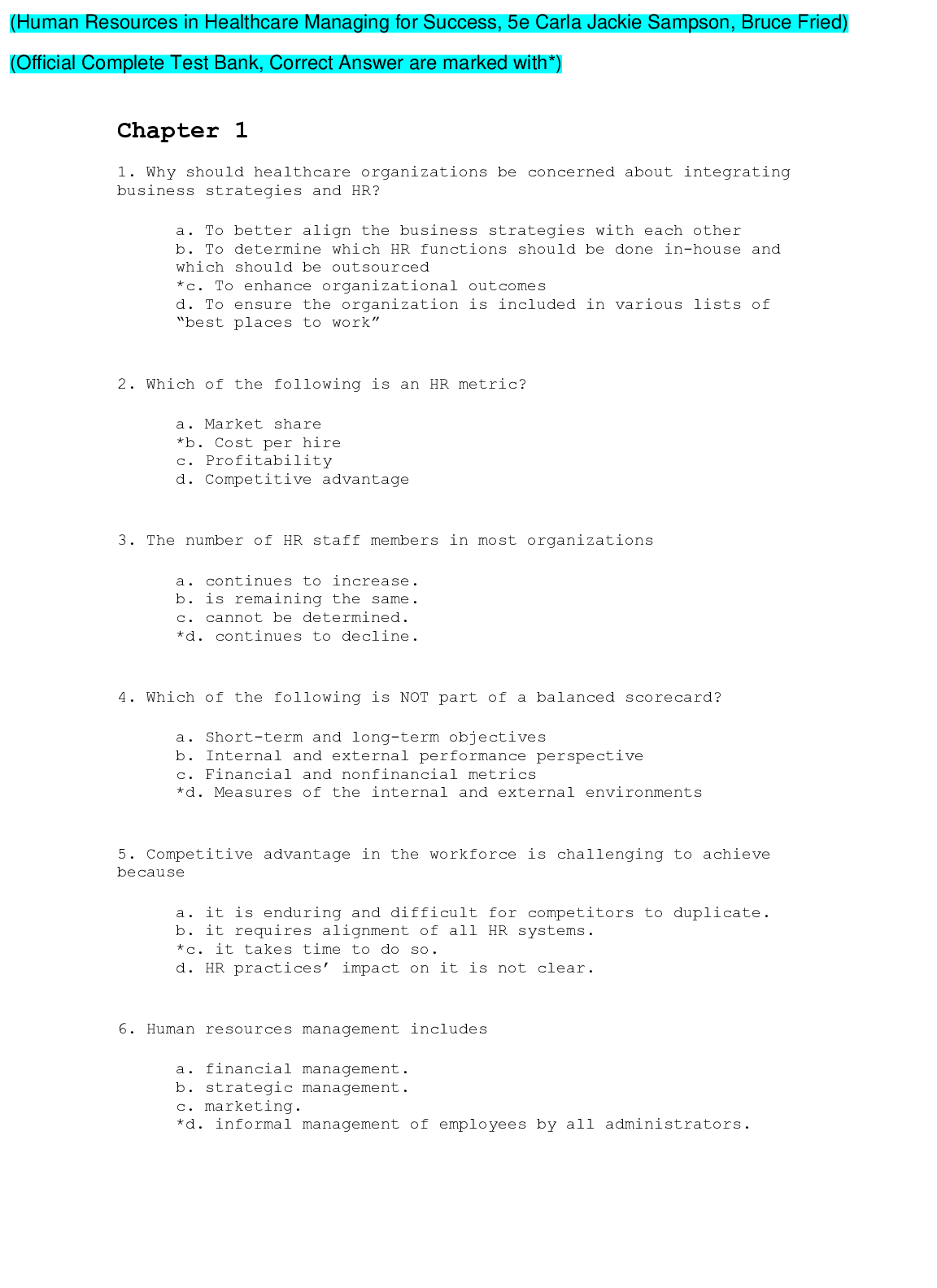



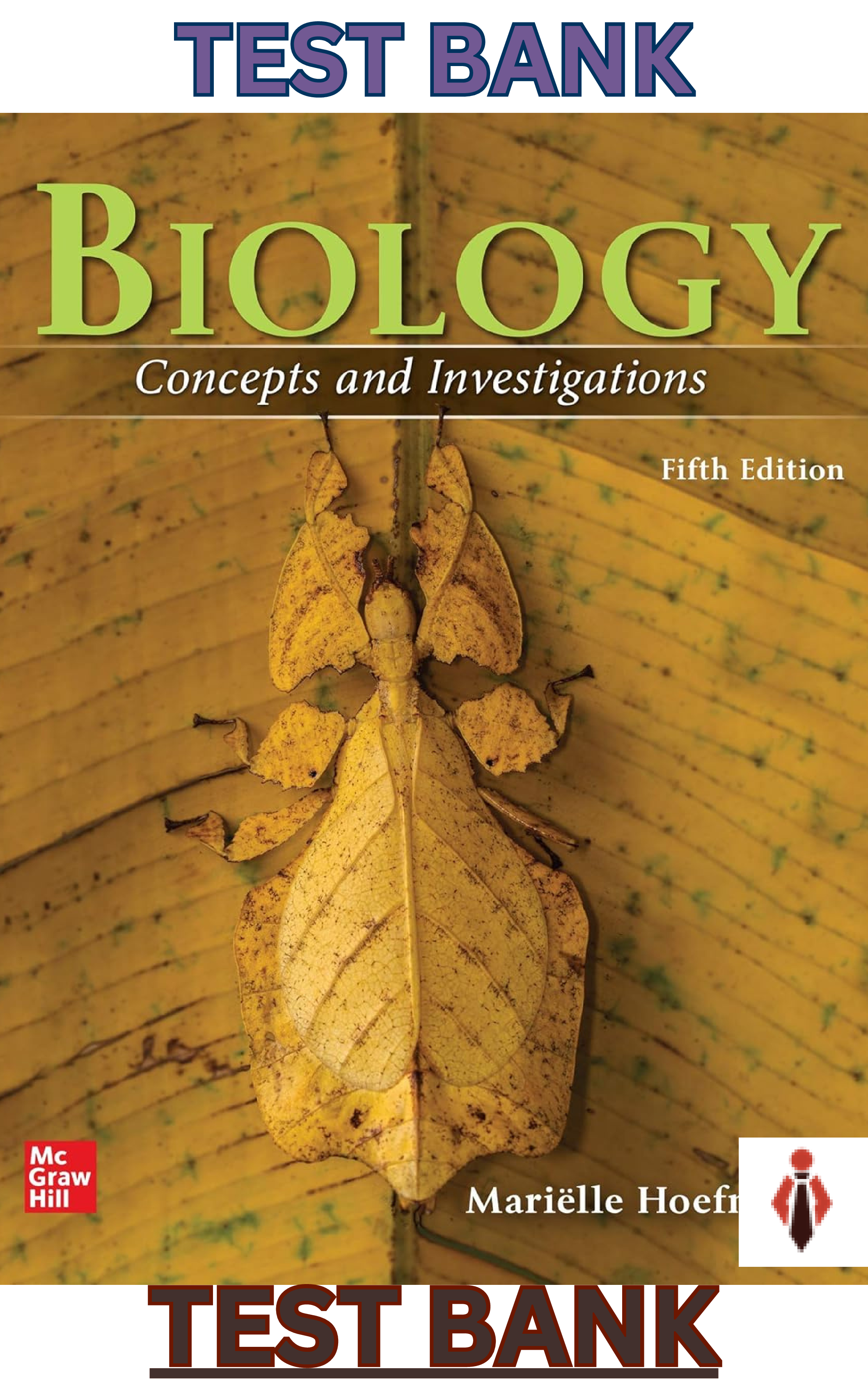
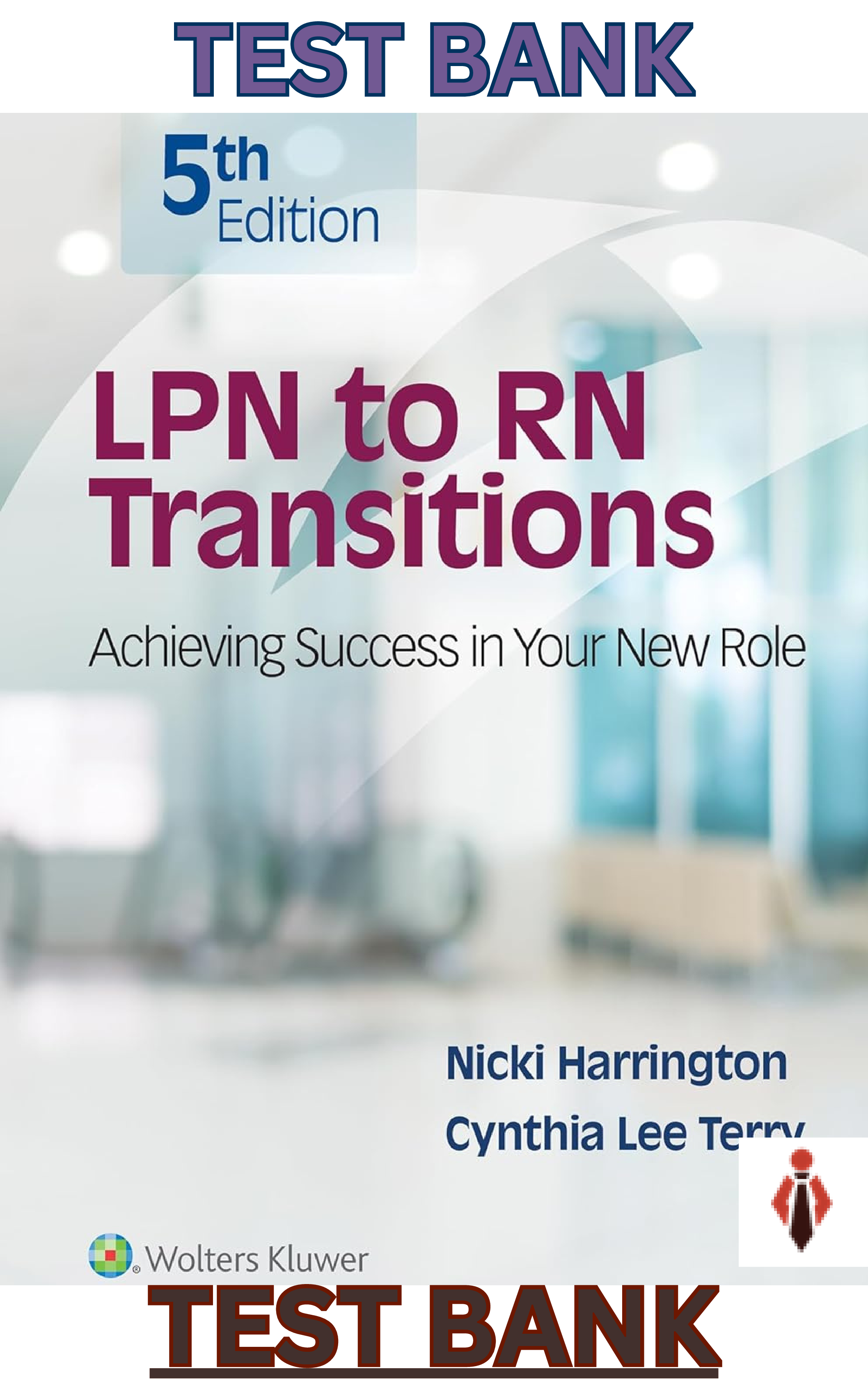

.png)
